EVENT GALLERY
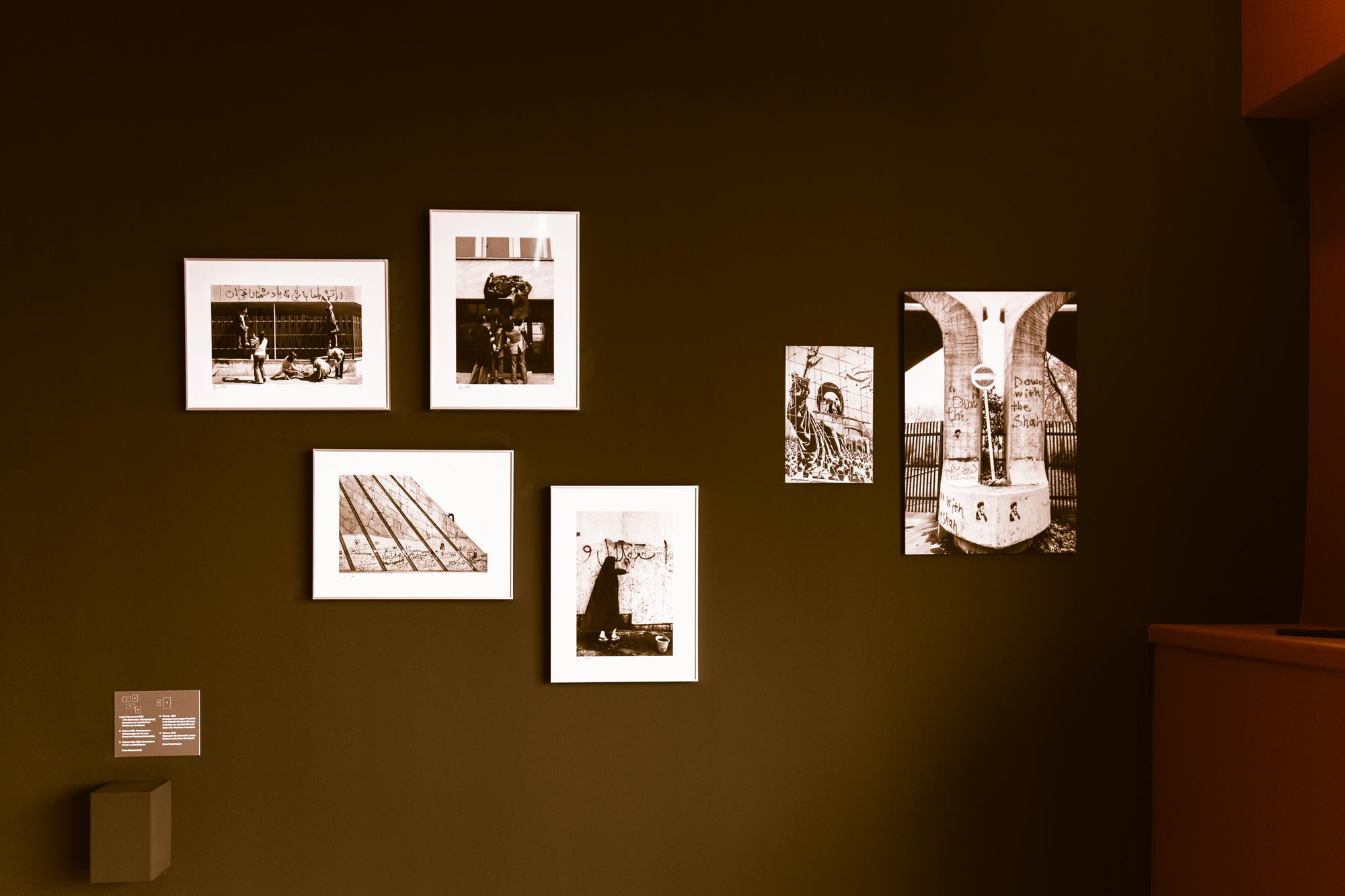
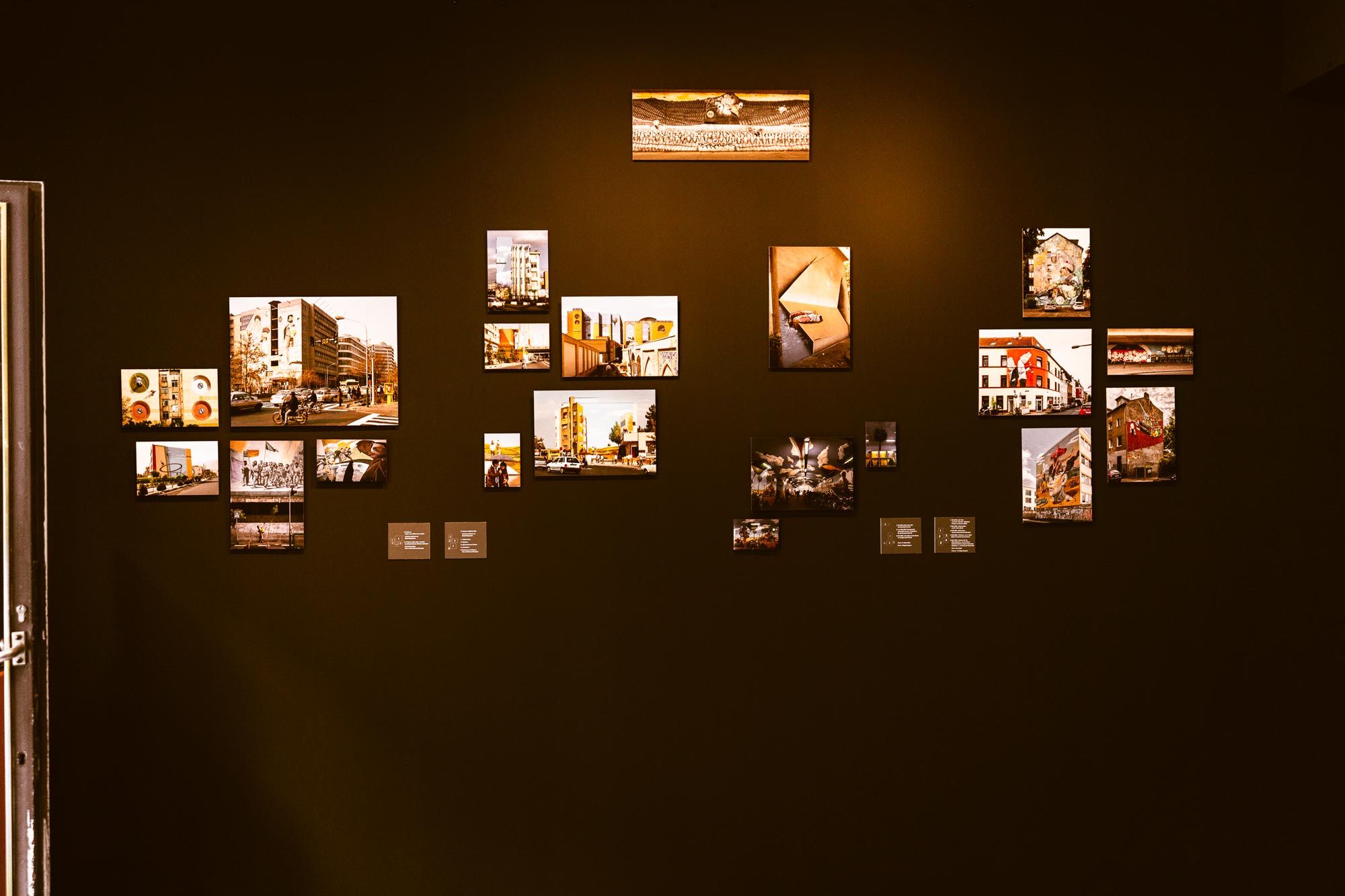
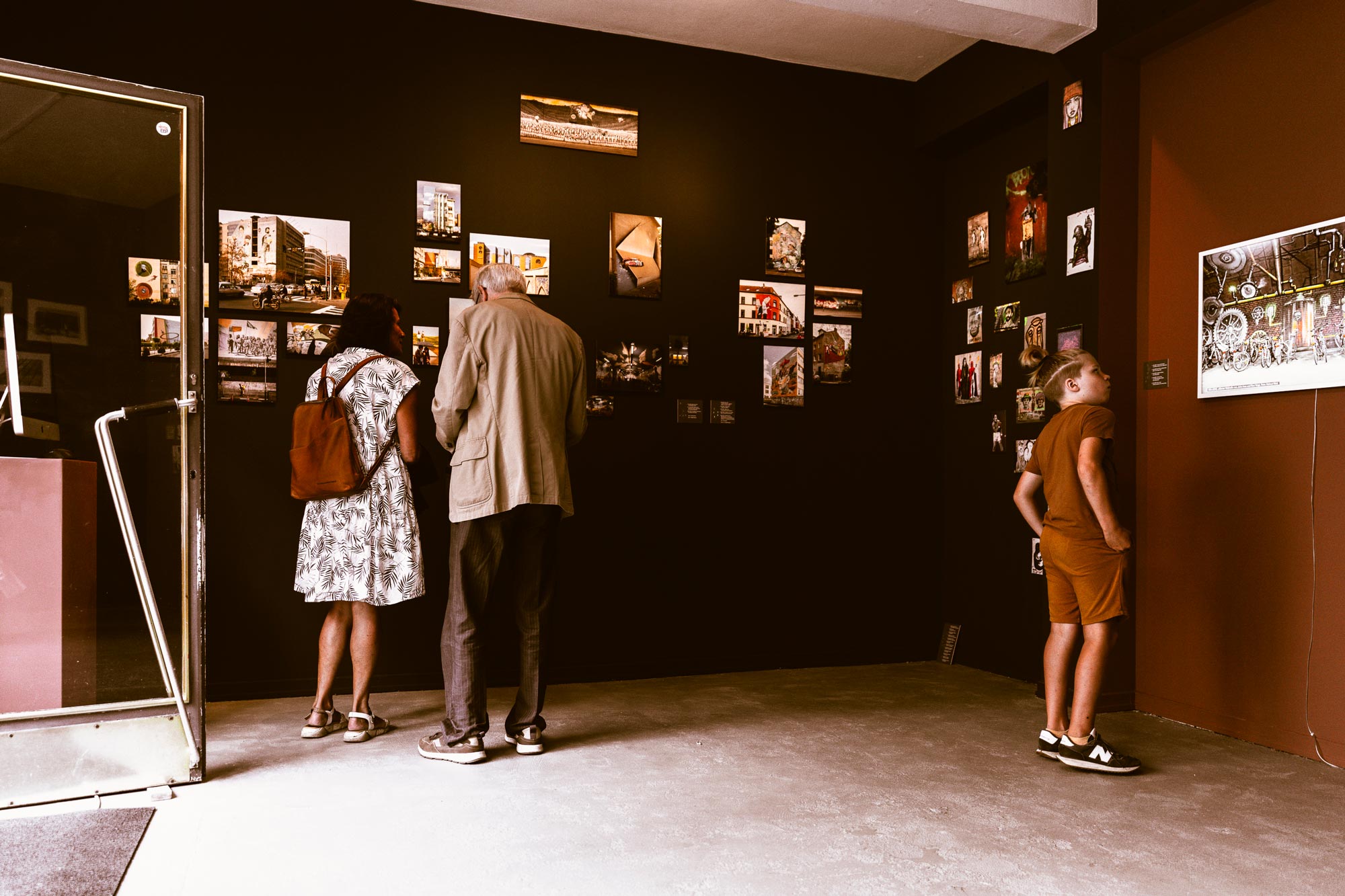
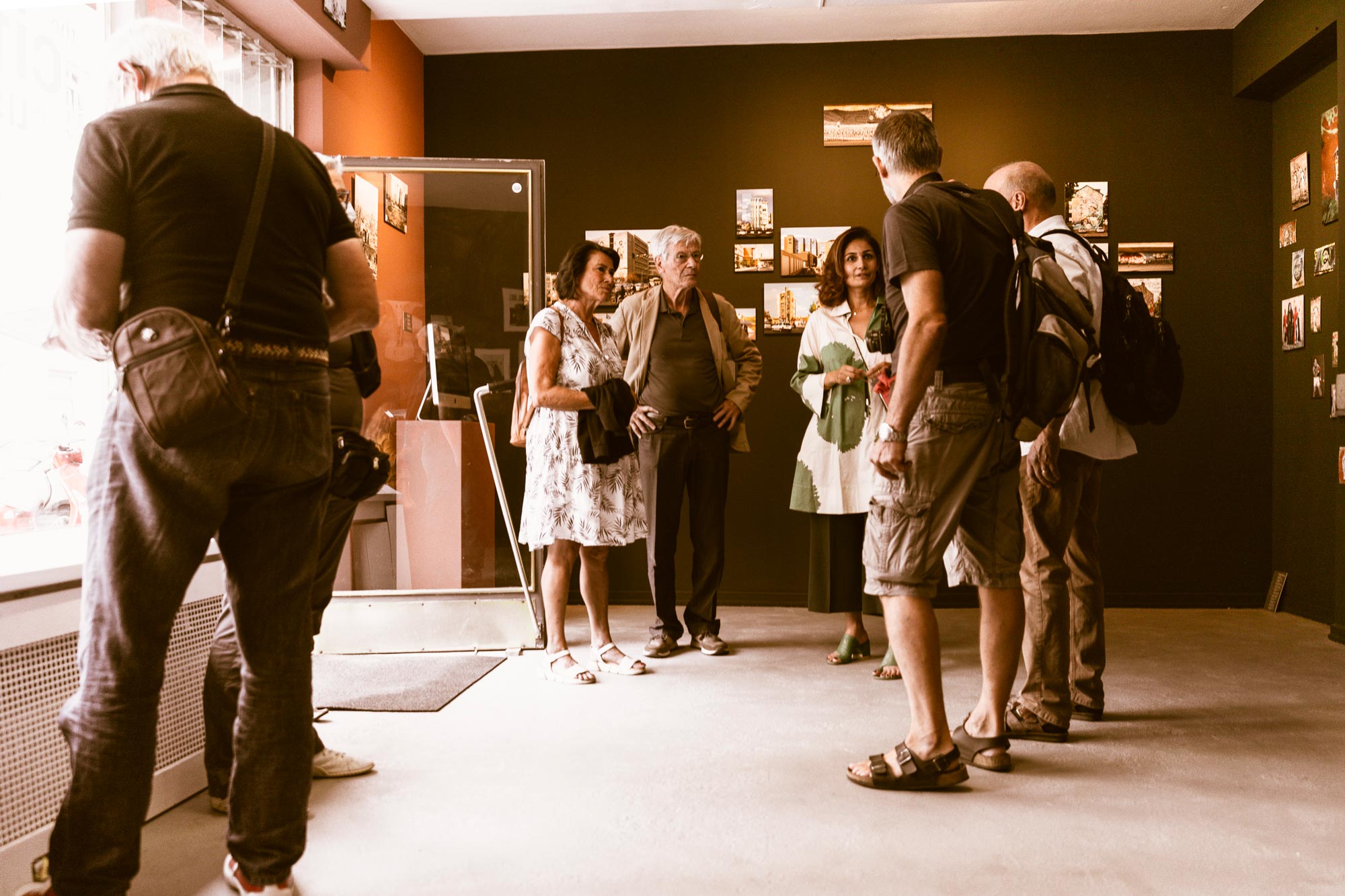
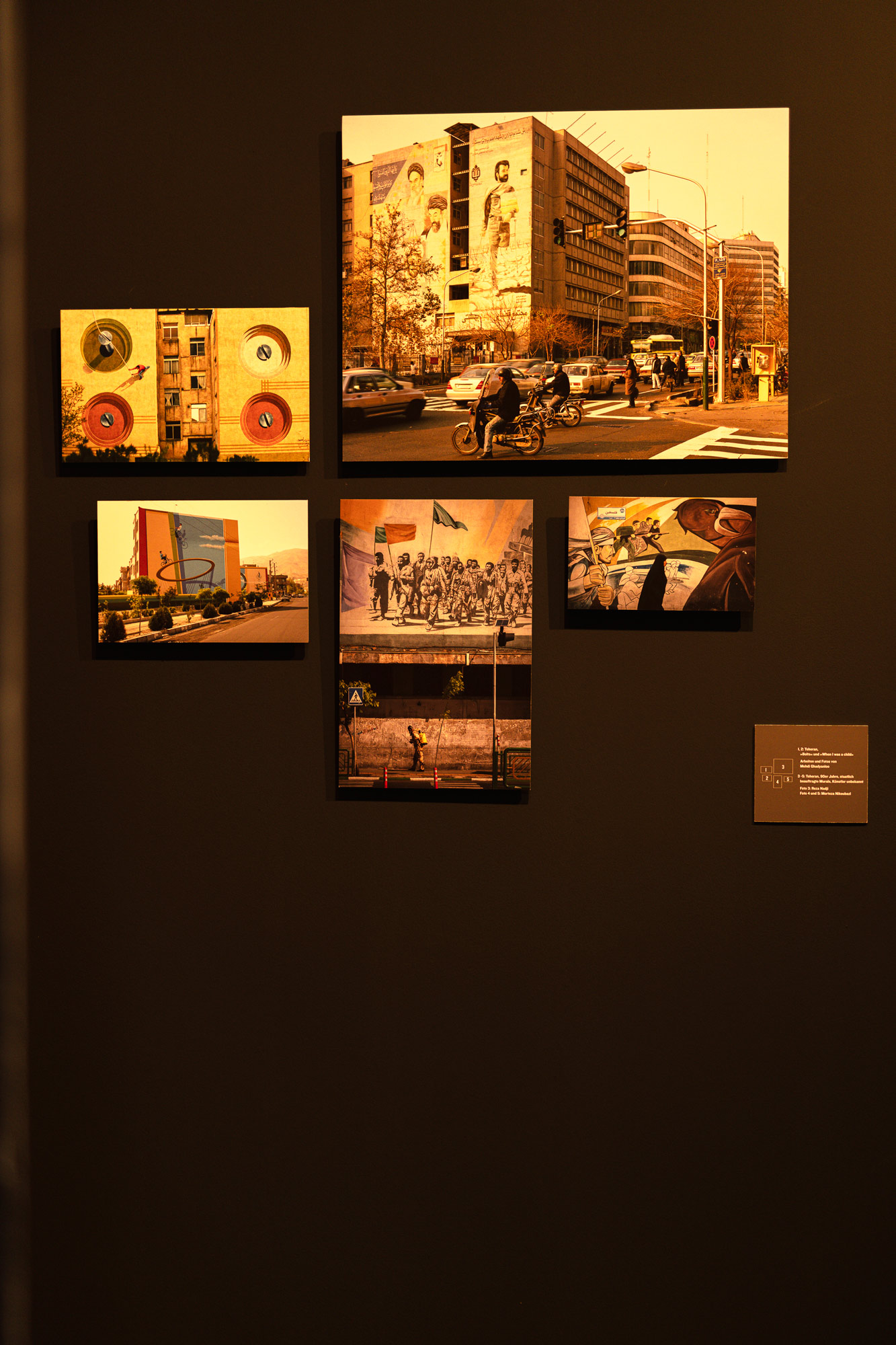
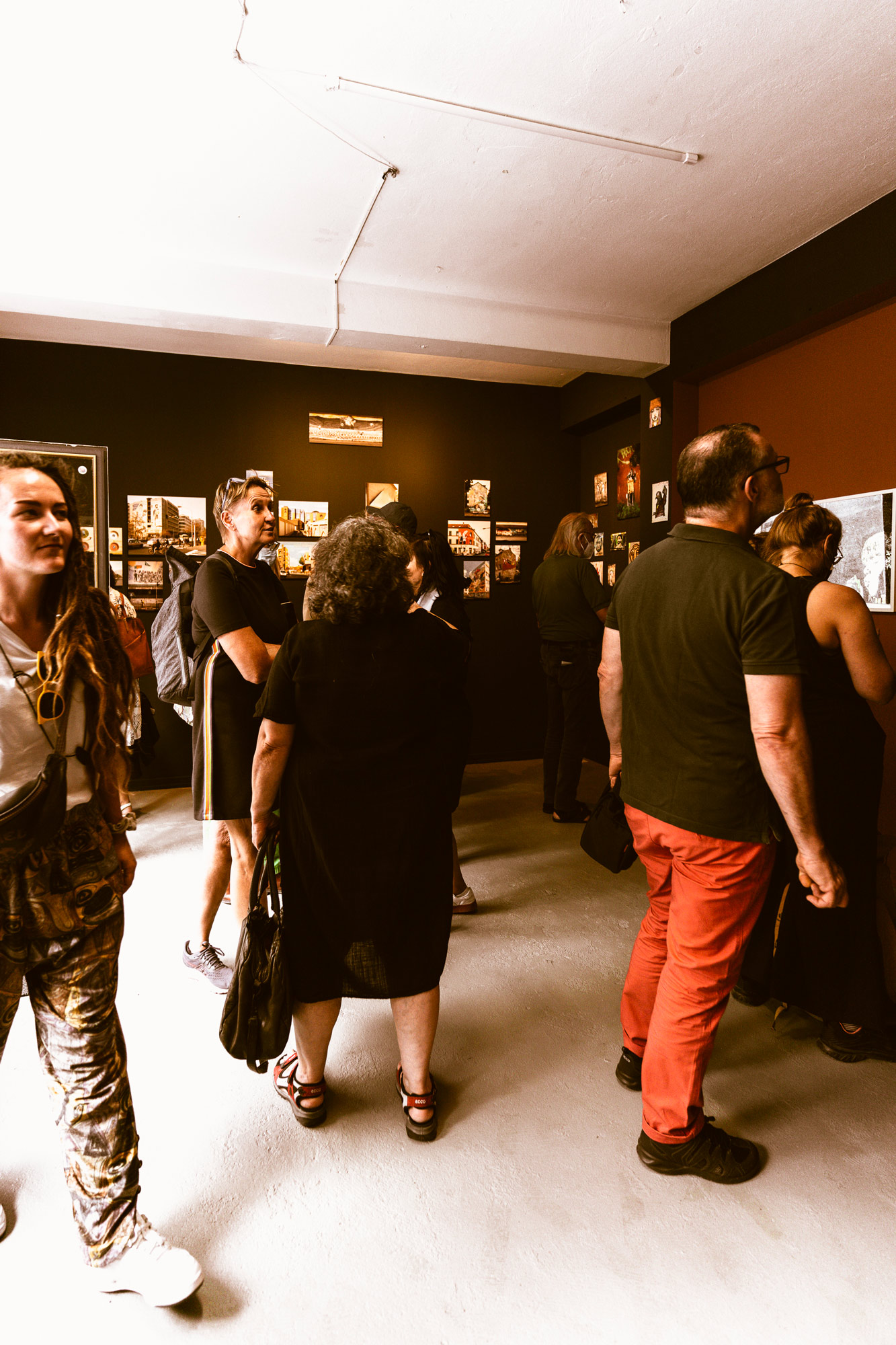

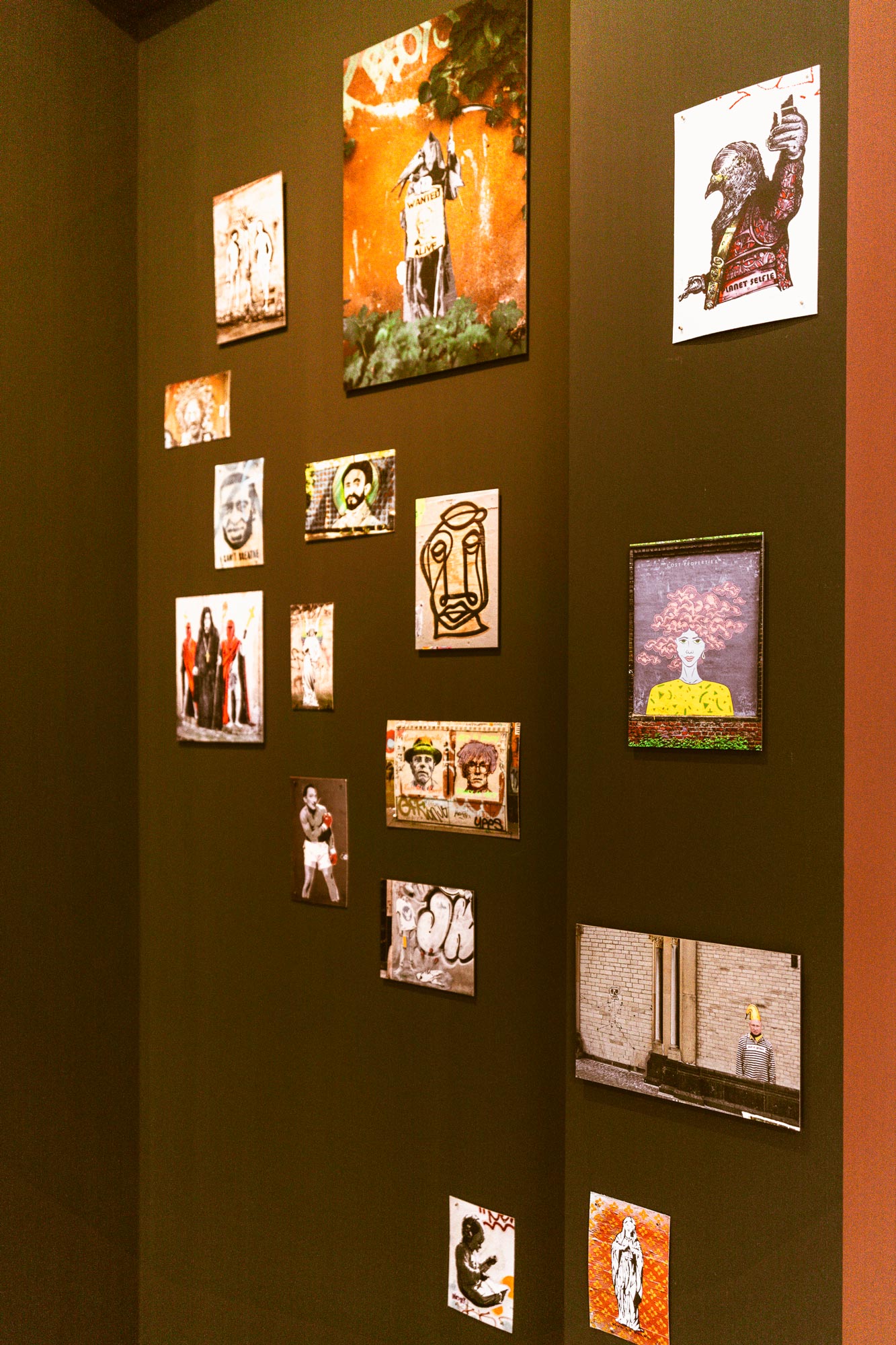

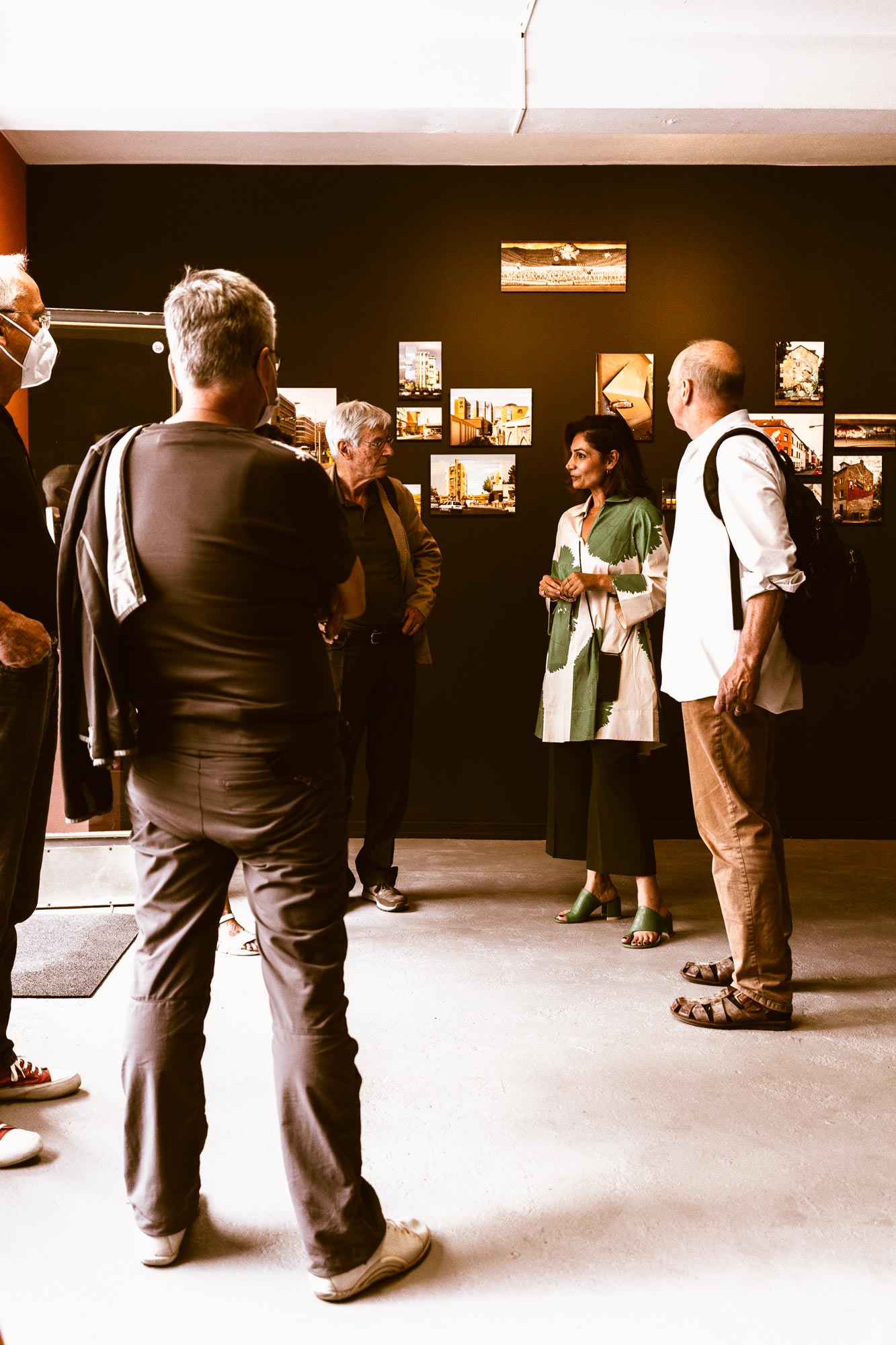
Photography By:
Jennifer Hartmann
03.09.2022
-15.10.2022
EXHIBITION
The City Is Us
Depending on which side we are standing on, a wall may enclose or exclude, protect, or pose threats.
Street Art, Graffiti, and murals may serve to remind us of this characteristic of surrounding walls. But do we still look? With a swarm of visual navigation systems and in the flood of advertising posters, our gaze is distracted; and with it, even murals as high as houses seem to get lost.
With the photo exhibition “The city is us” we want to recapture some of the unobstructed views on the significance of walls and the meaning of wall messages. Based on the megacities of Tehran and Cologne, we trace the individual peculiarities – including those of the respective political periods and contemporary spirits.
Despite – and because of – the different cultural backgrounds of the two cities, we invite you to discover their similarities and not just contrasts. You are welcome to sharpen your own perspective and experience the diversity that ultimately lies in people – in all of us. A variety and diversity to which the walls of any city can testify when they stand in front of us and at the same time and for us.
As voice and canvas.
As a mirror of our coexistence.
Fernsehbeitrag WDR2
Radiobeitrag WDR3
PUBLICATION
This publication is released on the occasion of the exhibition „The city is us – Tehran | Cologne“.
EVENT GALLERY










Photography By:
Jennifer Hartmann
GALLERY DESIGN
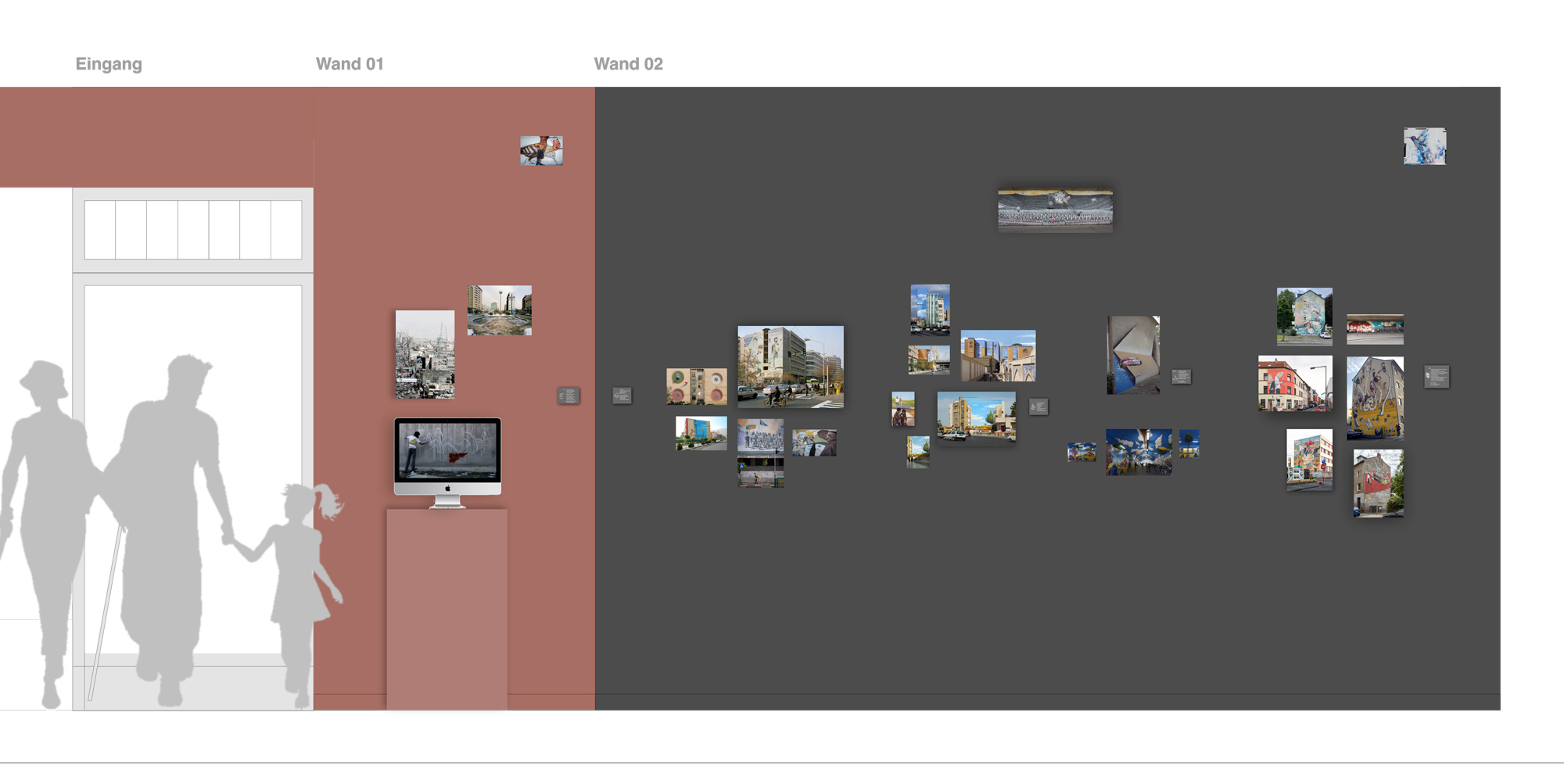
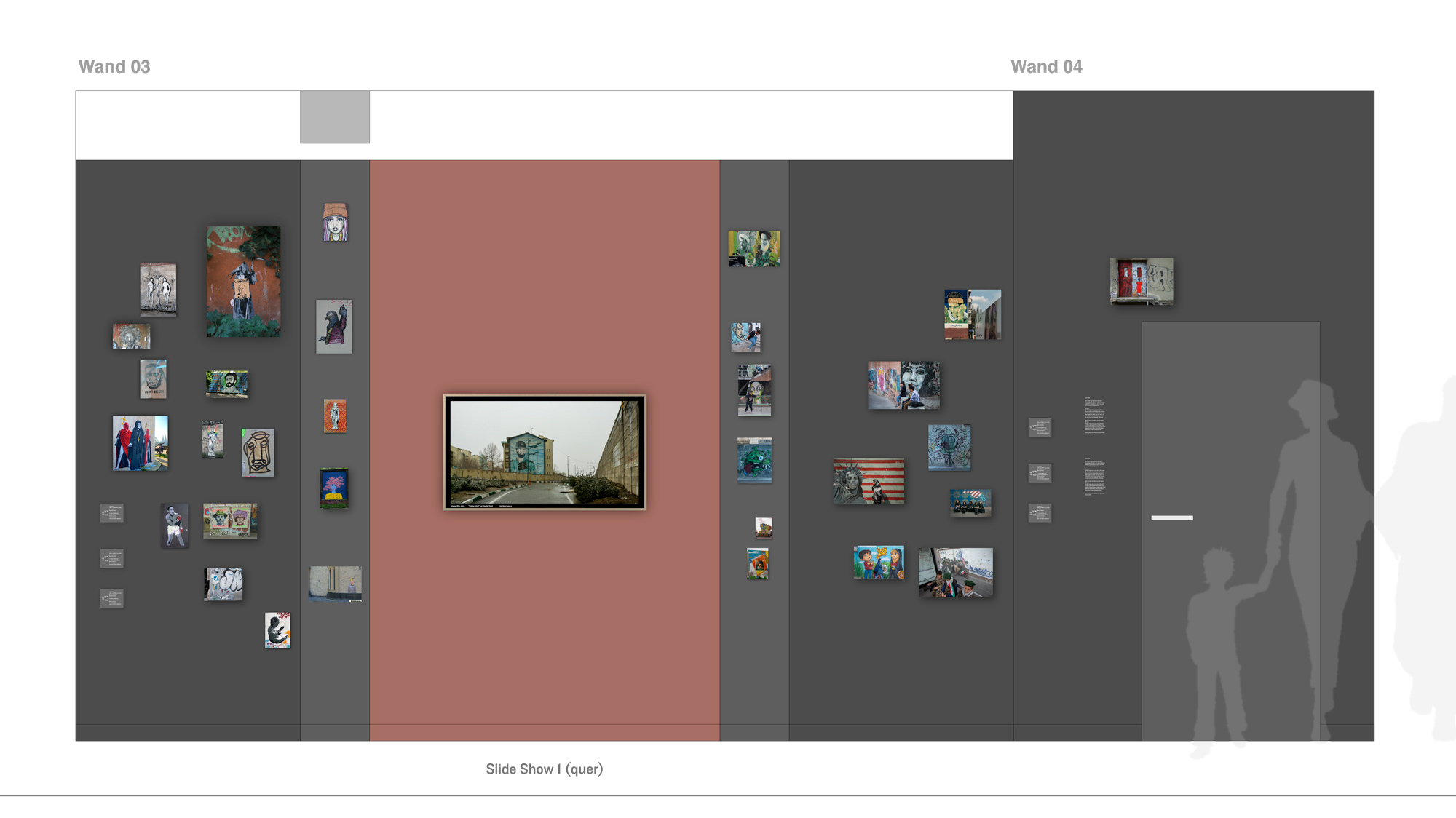
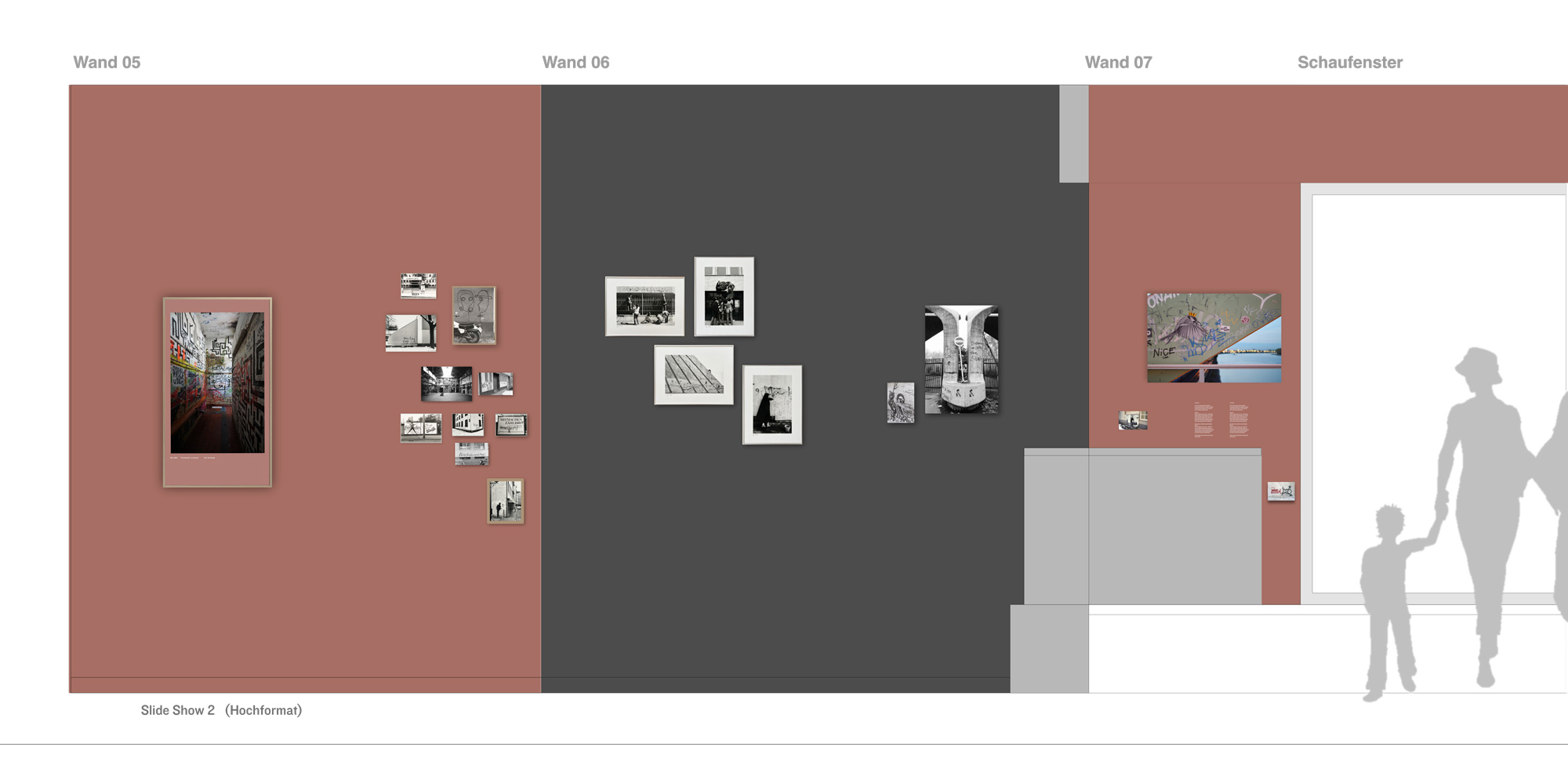
FILM & TALK
Documentary Film „Writing on the city“
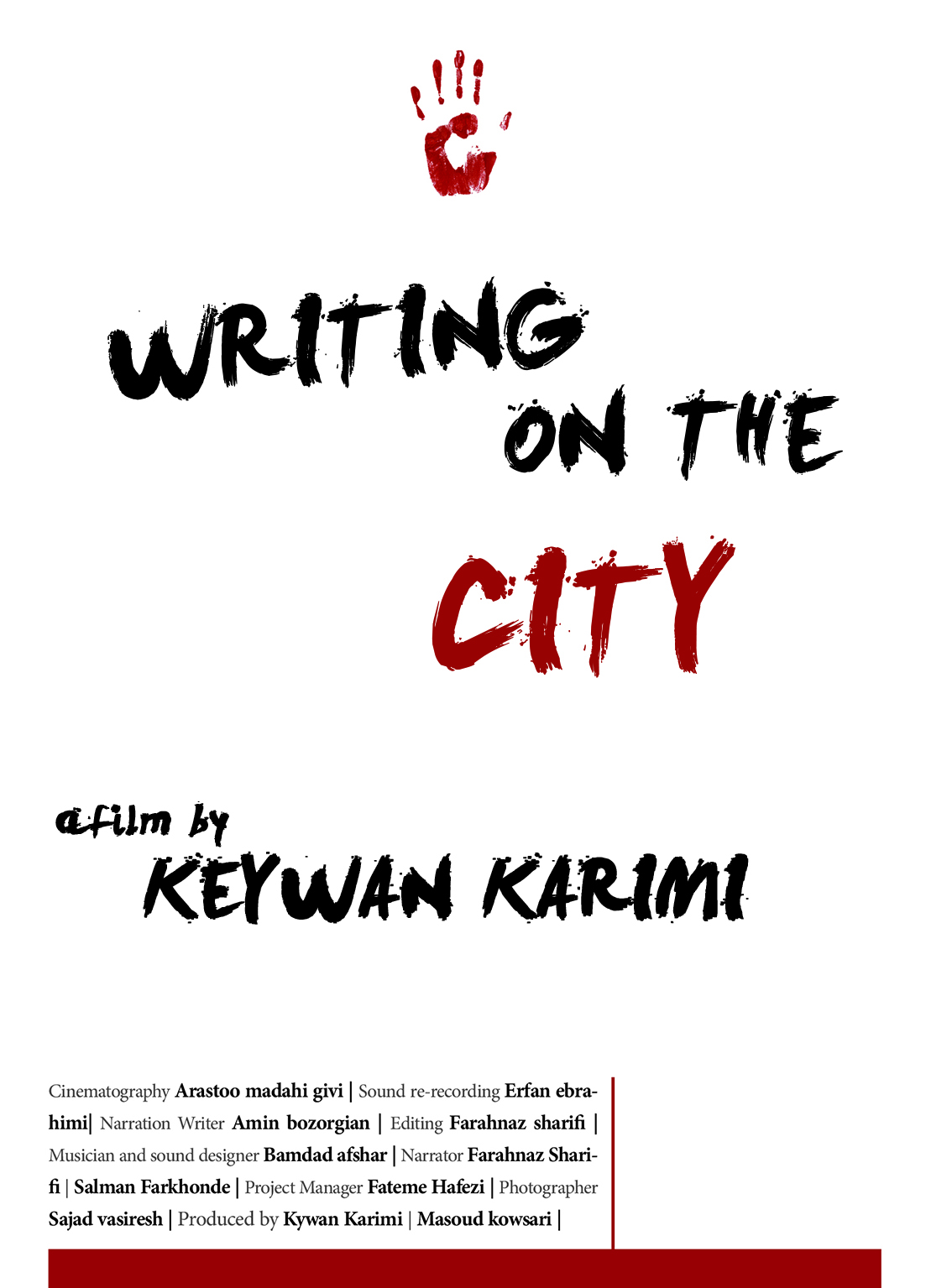
“Writing on the City” is a 60-minutes documentary film about thirty years of Tehran’s murals.
Using historical footage of the murals, wall slogans and graffiti, filmmaker Keywan Karimi traces the historical-political evolution of Iranian society, from the Islamic Revolution in 1979 to the “Green Movement” in 2009.
—
On 04.09.2022 and on 24.09.2022 we showed the film at Filmhaus Köln followed by a panel discussion with authors and photographers who participated in the exhibition.
Our guests were:
Maryam Zandi (Photographer and Author)
Johannes Stahl (Art Historian)
Shanti & Signl – Captain Borderline (Streetart Trio)
Robin von Gestern (Artist)
ESSAYS
The questions from the walls
andthe answers to them
by Johannes Stahl
The Bible says that God once wrote on the wall in Babylon when it came to the rather nega- tive evaluation of Nebuchadnezzar. From Nebuchadnezzar, in turn, it is assumed that in its time building inscriptions were put on Ishtar gate for its glory.
It will always be an exciting question as to who writes, draws or paints on walls when and why. This is true across many cultures, and likewise an interrelationship could be traced through history: on the one hand, the commissioned design of official interpretation read- ing, and on the other, the self-authorized use of the wall. Or to put it differently: on the one hand the tendency to create a political or aesthetic consensus (or at least to claim this) and on the other hand the objection against exactly this request, which then is motivated by the desire to also exist in this world or simply to want to express one’s own opinion here.

Stollwerck, Köln 1985. Foto von J. Stahl
Walls are by no means neutral places. They separate between public and private, their surfaces usually form barriers to a clear view, their material serves load-bearing, isolating, protective, or exclusionary functionality. So it’s rather obvious to perceive them as a means of constraint, especially when you see yourself on the wrong side. Such views tend to occur particularly often whenever power issues are brought up publicly and social or aesthetic consent becomes a subject of discussion. Historically, this can be traced for the French as well as the Russian revolutions, for the student unrest of the 1960s, the German Autumn in the mid-1970s, the revolution in Iran in 1979, the literarily noted year of 1984, or for the fall of the Berlin Wall in 1989. In addition, there is almost always the discussion of real es- tate speculation and squatting (which, with quite deliberate references to war events, they called „Häuserkampf” [house-to-house fighting]).
Cologne’s political microclimate – with all the often and gladly claimed Cologne pecu- liarity – reflects such world-political events on the walls. Anyone who strolled through the Cathedral City in the 1980s saw exactly what was going on in world politics: NATO re-ar- mament during the Cold War, disputes on the future of the former Stollwerck factory, the beacon of Chernobyl. Even the advertising industry’s campaign of conquest in public space, which can often only be perceived by comparing photos in the medium term, was already a topic on the walls in selected cases.

Situation mit Sprayzeichnung von Harald Naegeli und Reaktionen darauf, 1985. Foto von J. Stahl

Old school, wortwörtlich: Universität Köln, Lehrsaalgebäude. Foto von J. Stahl
A special venue for the Questions of the Walls was the Stollwerck Factory. It had been occupied in the late 1970s, after all, and there an alternative use of the space stood as a prototype against the urban planning of traditional housing. The imagery of punks, artists and ecologists opposed the idea of monument preservation, partial demolition and valua- ble inner-city living space.
5
6
The compromise finally found tasted somewhat bitter: clearing of the site, relocation of the artists, extensive demolition, new construction (according to urban ideas, not ex- actly alternative), official documentation of the alternative imagery on the wall by monu- ment preservation services before demolition, establishment of the Bürgerhaus Stollwerck.
The fact that such mementos are disappearing from the collective memory is partly due to the fact that the image culture of drawing gestures on the wall and slogan culture, which was still predominant in Cologne at the beginning of the 1980s, began to be pushed back. American-style Pieces spread rapidly from around the mid-1980s. Media reinforcement via magazines, books, films, and videos generated a new and catchy idea of what “Graffiti” means. The appeal of this entire cultural complex of Hip Hop can easily be understood by anyone who looks at advertisements from that time. This was helped not only by the inclu- sion of Breakdance and Rap, but also by the fact that Pieces can be marketed as a style and as youth culture, something that’s much more difficult for individual drawing manuscripts or for political messages.
In dealing with the wall, fundamental questions arise in terms of design: Those who use it as a mere painting surface and cover it up in a two-dimensional way kind of negate the wall, giving it a new identity. The fact that our world can be deceptive has always inspired mural painting: Illusionistic effects and surreal worlds of strongly effective color surfaces have driven many clients to let their own view of things take shape here. The danger exists that artists then become illustrators of official views or at least soften them with dream worlds. Especially in repressive systems, one will then have to practice the skill of reading between the lines in pictures, in addition to the official or decorative effect of Potemkin houses, beautiful strong men, or other polished conditions. But which distant views in the mural hold secret alternatives, what is the symbolism of balloons, vehicles, stairs or secret passages which open up, especially in relation to the walls?
Places become particularly exciting when the officially commissioned design and the wild, self-authorized practice collide. This was already the case when the figure sprayed by Harald Naegeli without permission on the portal of the former Caecilienkirche in Cologne was legitimized by a restauration and competing sprayers took on the situation.
Then the authenticity of the situation is to be rather questioned. Is the wall on which there is a message really as badly neglected as it seems? After all, even artificial ruins ex- ist. Does the inscription refer to the wall and its appearance, does it perhaps even use its texture, does it “design-ate” the situation?
And last but not least: to whom is the appeal of the drawing, the writing directed, and what happens behind the eyes of the viewer? As is well known, eyes are windows to the soul, and possibly more translucent than walls. But I do not want to start with this topic here. Elsewhere you’ld already be in trouble just by having asked about it.
Sociology of the wall Rereading
Iran’s contemporary political
history through murals
by Amin Bozorgian &
Maryam Vahdati
History is the science of interpreting humankind’s past in the light of the present, which results from the methods, choices and interpretations of historians. Each historian tells a part or shows a meaning of what lies in the past. In the same way, political history can show different, even contradictory, aspects. The transmitters of history reading are documents, of which – since long ago – the mural is one.
The contemporary murals and graffiti in Iran contribute to understanding political his- tory, because the murals themselves indicate a particular political situation. At certain times, this was the absence of civil society, free media and democracy, for example, which is why people were forced to transmit their words through intermediaries such as the wall. What appeared there was, you could say, a thermometer of society.
The first connection between urban walls and political power dates back to the build- ings of cities. Walls around the city marked the circle of power representing the king and the government. Today, however, cities no longer bear the walls around them. The modern nation-state rules without borders. The cities have taken the walls into themselves. The walls are no longer just boundaries for houses and streets, but have become new borders and tell new stories. They indicate who the dominant power is. What goes on the walls is a set of orders or policies that regulate society.
The street, in turn, corresponds with the walls; the streets correlate with the walls and the city. This connection can be critical. The government moves into the spaces between them and controls their communication. In this sense, the wall is a reflection of the govern- ment’s wishes and desires for the city and its inhabitants. Although the walls act as mirrors for the streets, the streets often cannot see their face. What can be seen is the rugged body of a government standing between them.
Sometimes, in history, the street has been able to show itself in the mirror of the wall. Graffiti, murals, and Street Art witness moments when government is pushed aside.
Before the Constitutional Revolution in the early twentieth century, the city walls were only open to government proclamations and orders from urban municipalities. But as the protests began, the revolutionaries posted many of their own leaflets and the orders of the clergy on the walls. From this date on, the walls became a point of contention between the government and the opposition. Wall texts were also a reflection of marginal sounds. Proc- lamations of the constitutionalists were posted at night and during the day the police re- moved them from the walls. Both sides of the controversy realized that the more they could take over the walls, the more they could influence people.
7
8
According to the French Marxist philosopher and sociologist Henry Lefebvre, everyday life never completely obeys the rules of the system and, because of its inherent fertility, it creates spaces in which people resist all mental or physical forms of oppression and decep- tion. In this context – and even more so in today’s consumer and control society – the mural can also be understood as a form of resistance to externally imposed rules.
Therefore, urban walls have become sites of conflict, especially in modern civilizations; a conflict between the government, the ruling class or the macrostructure of capital, on the one hand, and the ordinary people or lower classes on the other. Lefebvre’s perspective leads us to reflect on the fact that the wall is not only a consumable object that separates different places, but that it can be a production of space.
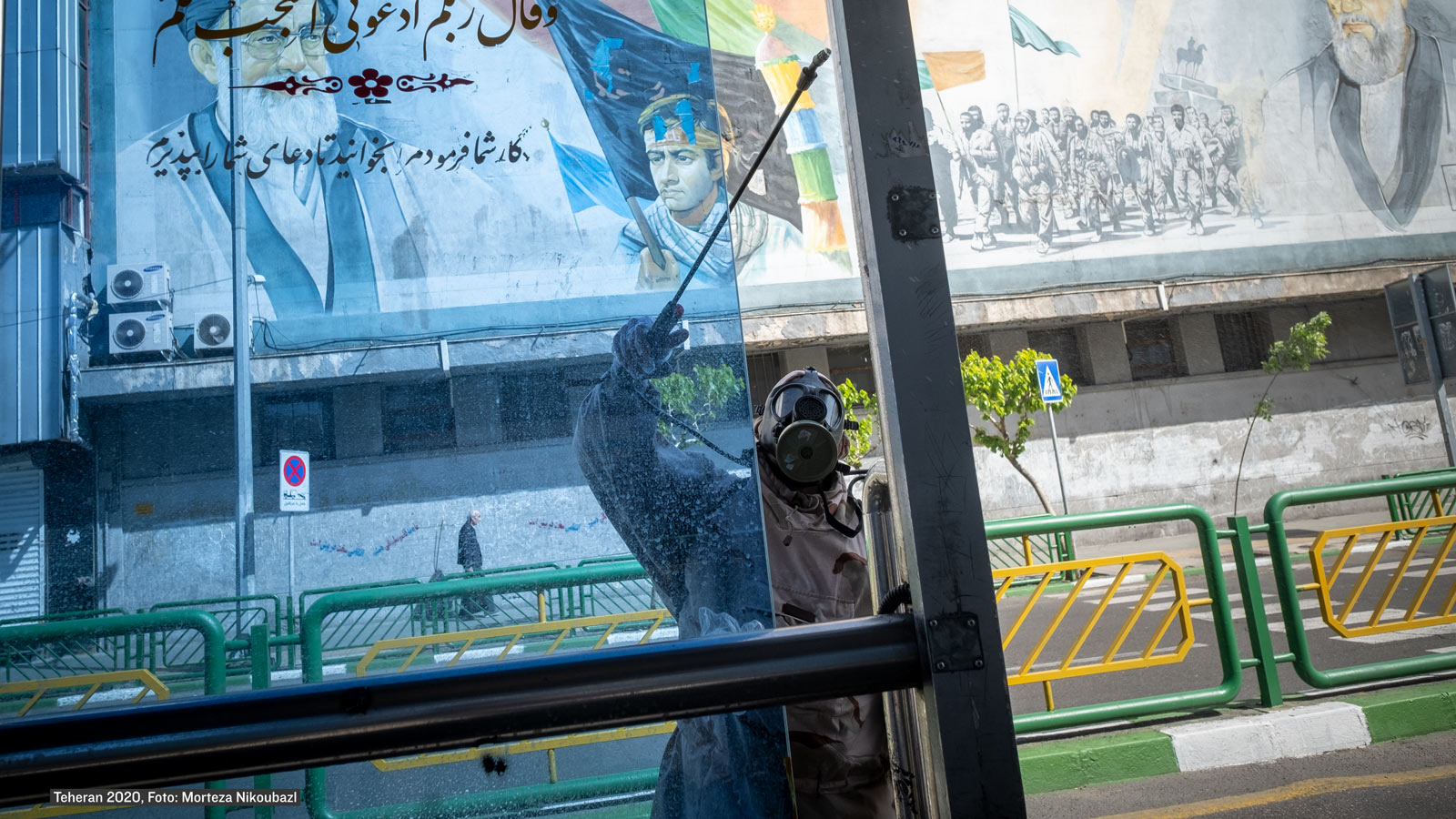
Walls have served as triggers for the rise of social movements; for this, they were and still are possibly the most popular and most reliable medium. This also became clear when Reza Shah had new streets built and entire streets renovated before the visit of the Saudi king, in order to present a modernized image of Tehran. He probably did not think that this would increase the possibility of protest and revolution, but it turned out that the streets opened up maximum resistance to state power.
A few years after the deposition of the Shah, the Iran-Iraq war followed. With its be- ginning, death was etched on the walls, the voices of the revolution became one voice, and the struggle for a better life was replaced by the struggle against the enemy. The walls in- troduced new heroes into society, although those could only become such heroes through their own death as martyrs. Or, in other words:
If the murals and graffiti of the revolution called people to the streets and to life, the walls of the war called people to the front and to death.
During the war, red was the main color of murals; the color that should have evoked blood. During the revolution, red was the color of liberation and struggle against tyranny. Now with the establishment of the new government, its former meanings could be danger- ous for the ruler and confusing for the people. On the other hand, they could not be dis- carded, so the best thing to do was to semantically rotate objects and things. The walls put tragedy at the service of ideology.
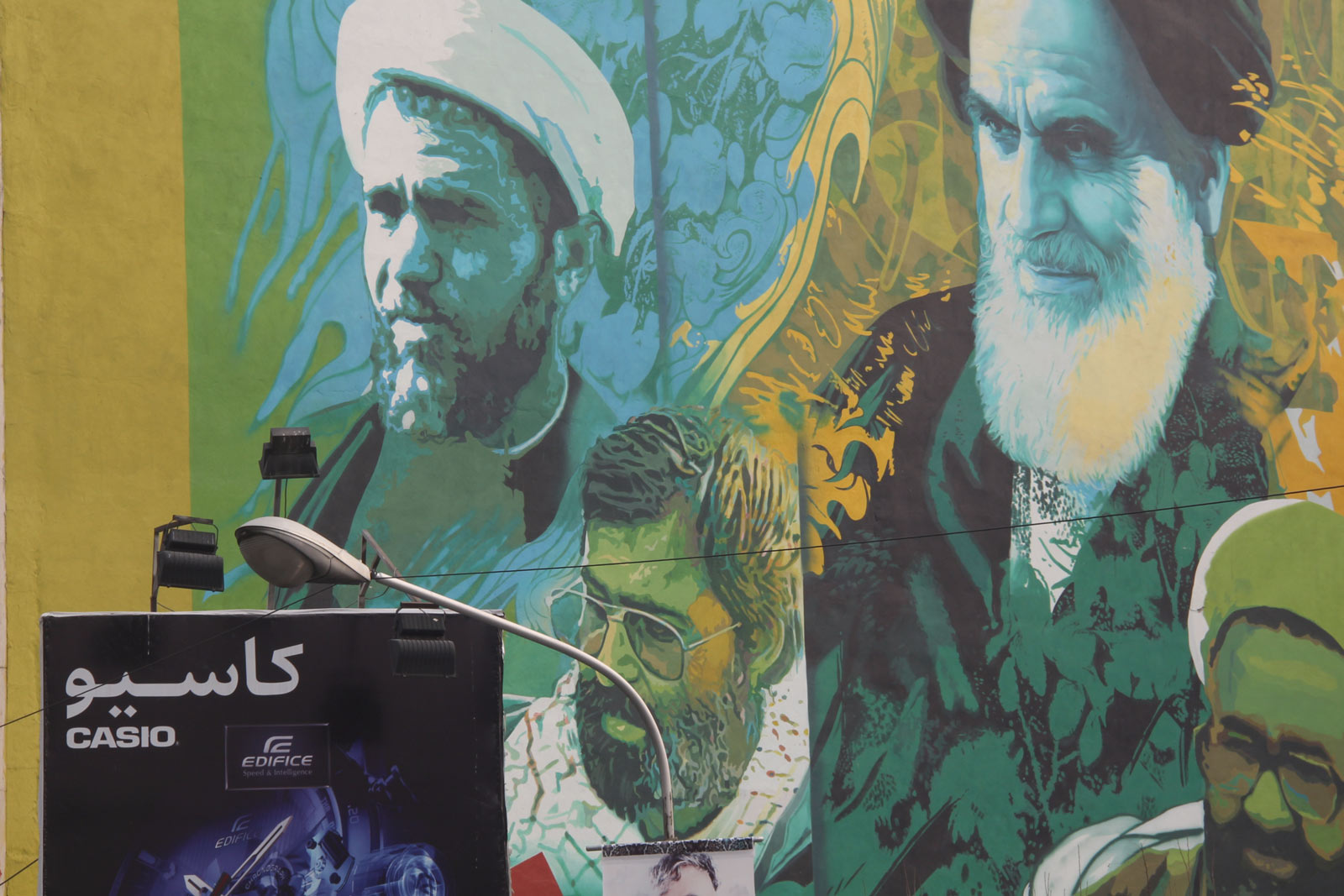
After the war, the urban structures of Tehran and other major cities developed in a somewhat poorly balanced direction: multi-story residential and commercial towers pro- truded from smaller houses, with huge side walls as sort of monuments to imbalance. This is where new urban beautification policies and large-scale mural projects were introduced. As a result, the heroes of war increasingly stepped back behind billboards of a new Tehran, from which space for new products and slogans emerged. The borders were no longer plac- es of struggle, but places of entry for modernization and goods – the walls of Tehran showed this in the greatest dimensions.
Murals of that time reflect the widening gap between ideals and promises, on the one hand, and the existing reality of people’s day-to-day lives on the other. The new images became witnesses of this collective alienation and while earlier graffiti had still spoken of hopes and ideals, the more recent, increasingly dominant billboards merely looked like postcards of failure to many people. Or like rich seducers who change color every day and constantly embrace new goods and ideologies.
Graffiti, however, is not interested in smooth and pleasing walls but in worn-out, dirty ones. The designs and writings call the attention of passers-by to the ruins and remind them of destruction or the mechanisms that can destroy a city and its people.
Graffiti popularizes art not for more sales but for more attention. Graffiti, with its ex- pressiveness and frankness, asks its audiences to take back their city. The graffiti artists are (almost) always unknown and ready to flee. It is as if these texts were written by a so- ciety. Hiding their identity allows the authors to break with common conventions. Through their messages, they connect the private sphere to the public sphere, shout whispers, ridi- cule dominant relationships and dominant culture, and create a state of emergency during this activity. On the one hand, they represent the current political, economic and social re- lations, and on the other hand, they tell about contradictions and oppositions.
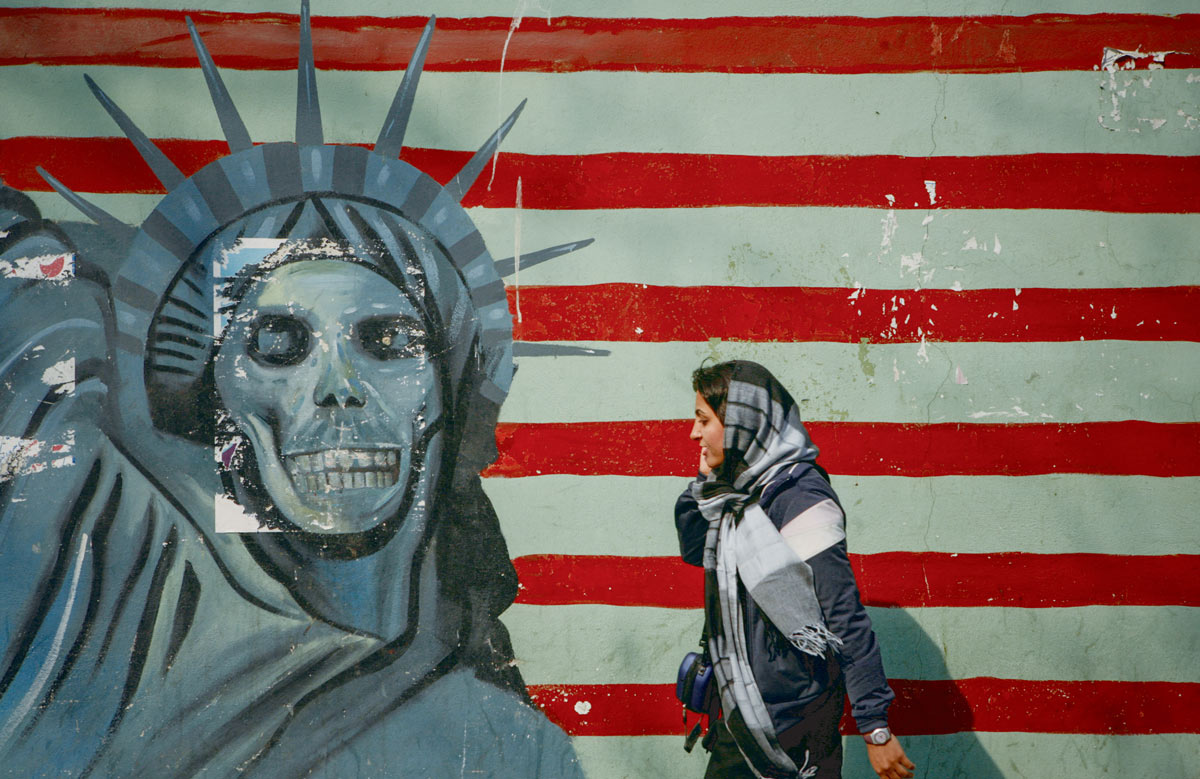
The wall has been one of the most important media at the service of the government and the ruling class to depoliticize society. There was a hidden conflict between the people and the ruler in this special space and it is exactly there that its protesters begin to express themselves. Thus – and with Lefebvre’s theories in mind – we might be facing a second lay- er of the production of space here.If, in its first layer, the production of space meant the production of critical space, this second layer can be seen as the production of a ‚battlefield’.
According to Lefebvre’s political economy approach, space, driven by capitalist pro- cesses, penetrates into social relations, perpetuates itself through them, but also creates new social relations and reforms itself through them in turn.
Therefore, spatial representations – and here we return to the artistic design of urban walls – can be seen to always hold ideological content in the form of codes and images that relate to the dominant relations of production. They have, therefore, a nature that arises at the level of discourse.
Especially through Street Art and Urban Art, new possibilities do indeed open up for people to let everyday living spaces become their own and new spaces of representation, and thus to (re)conquer the organized space that has been dominated from other sides.

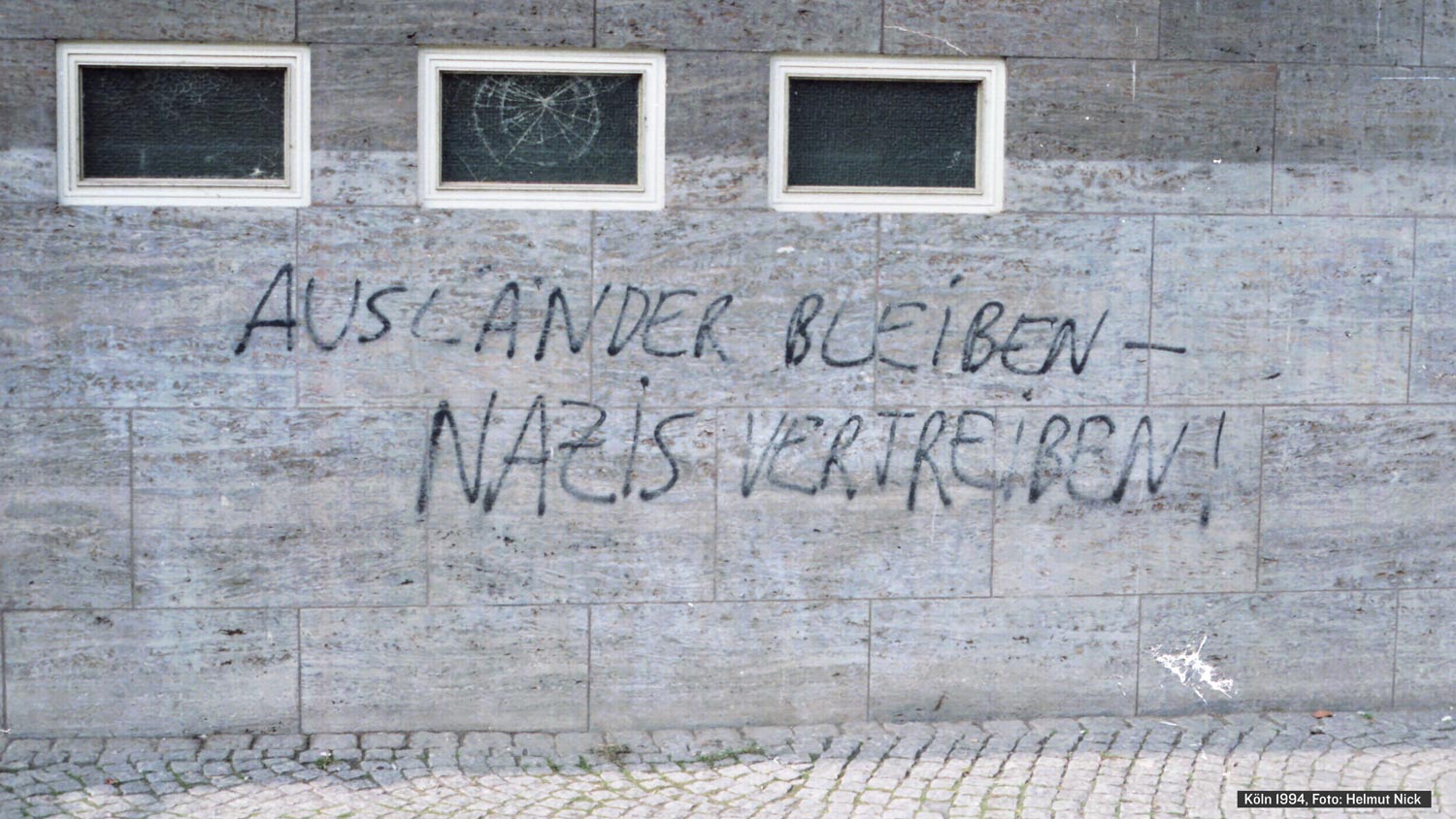

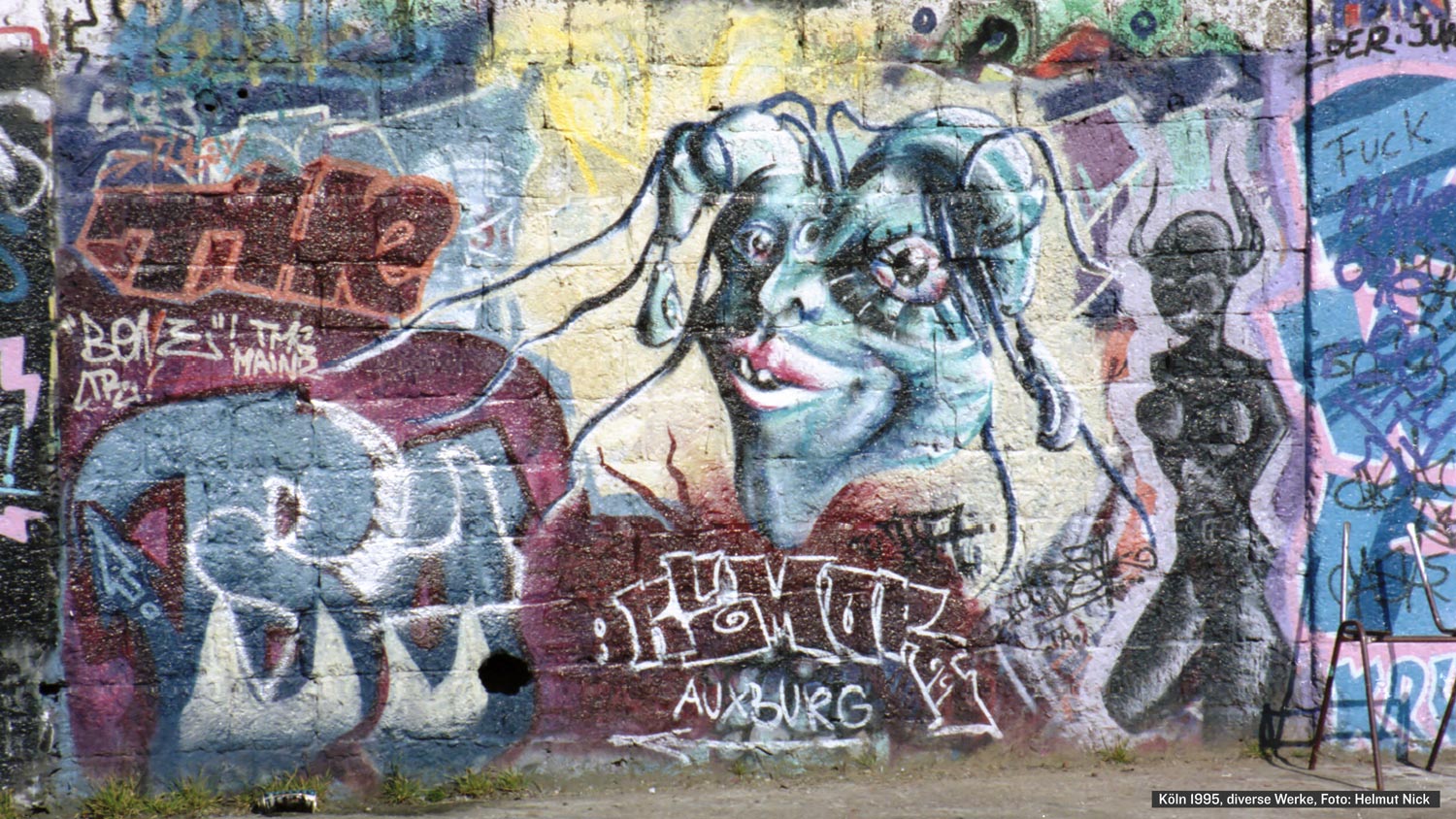

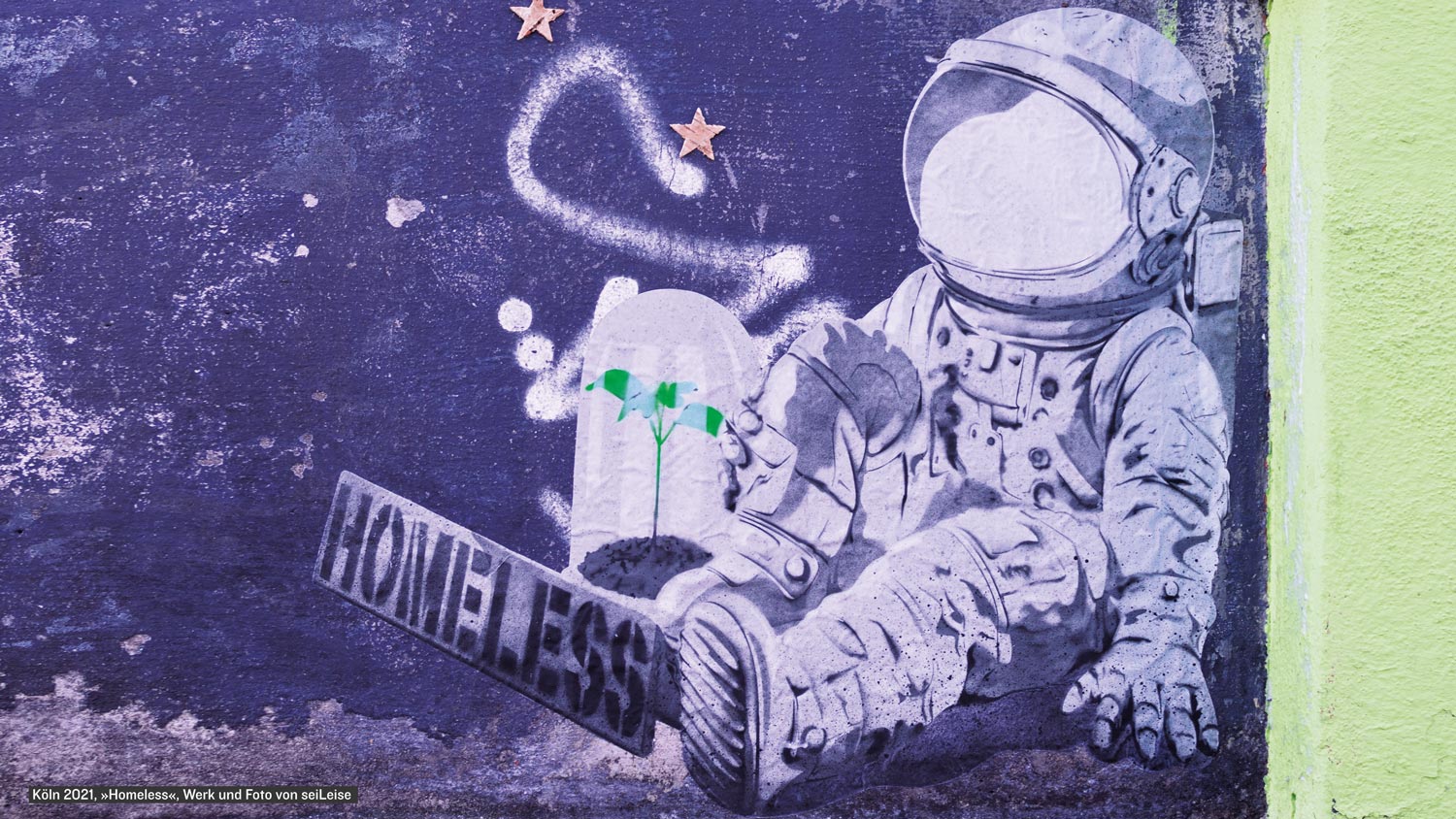

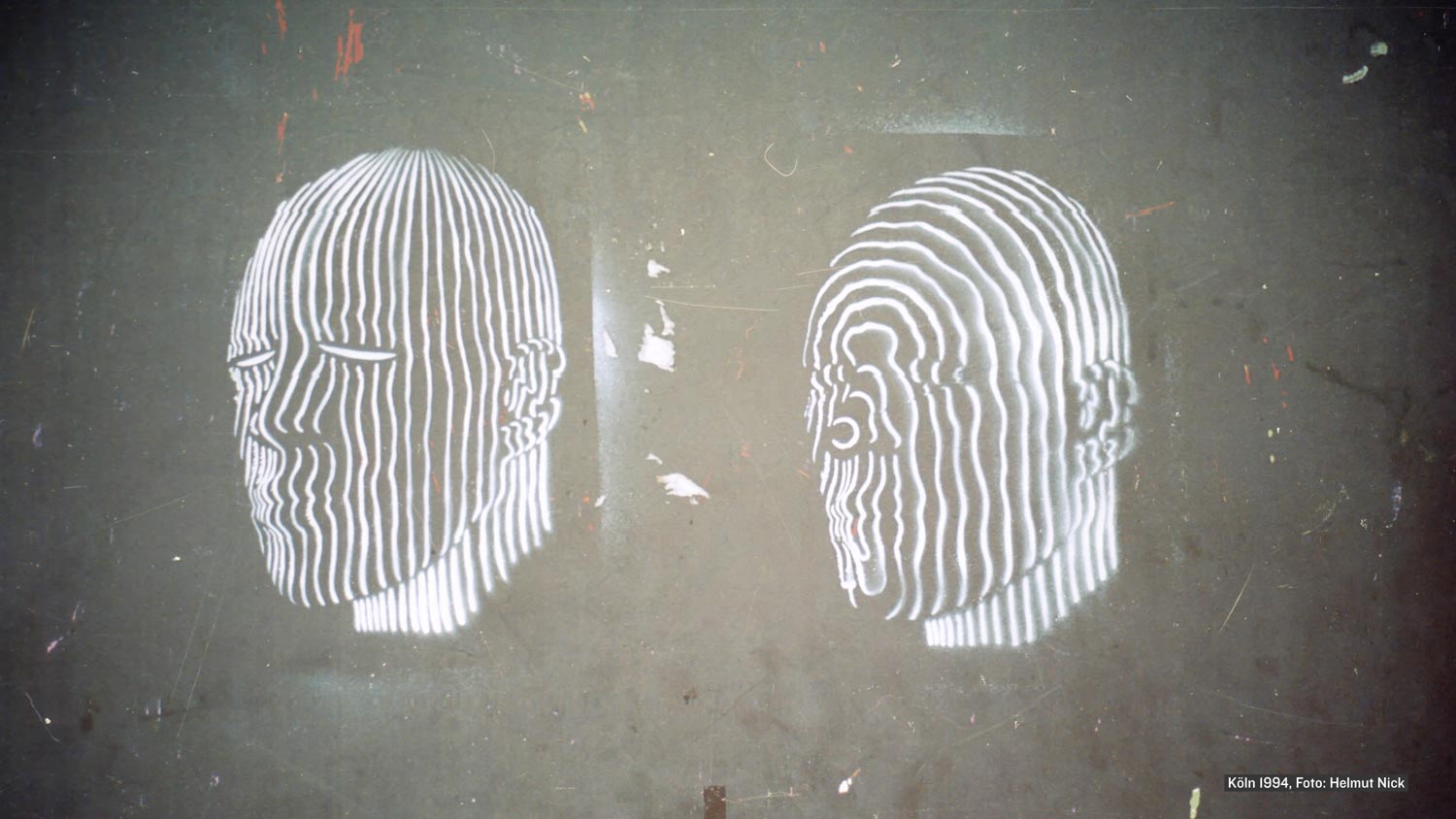


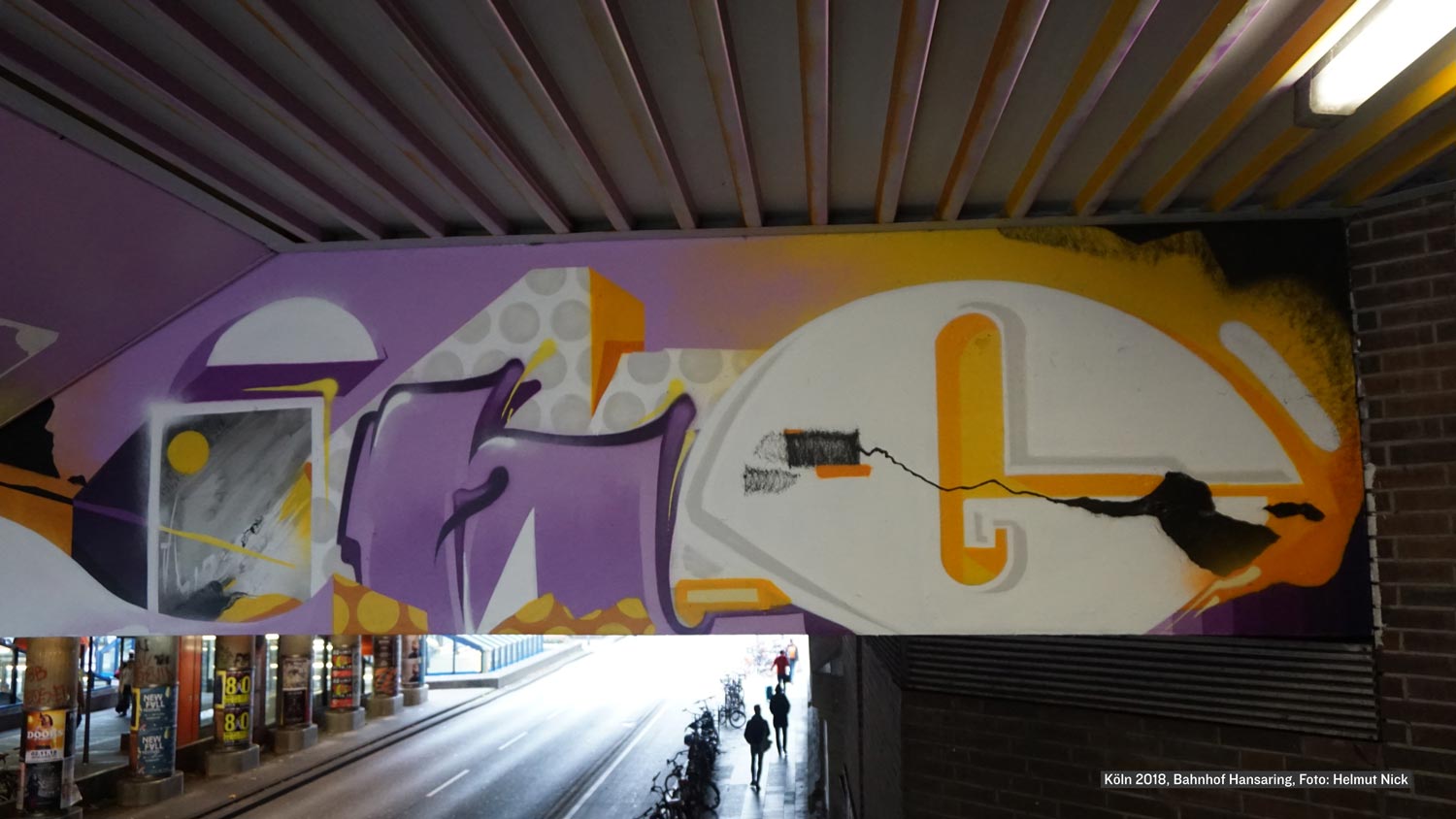

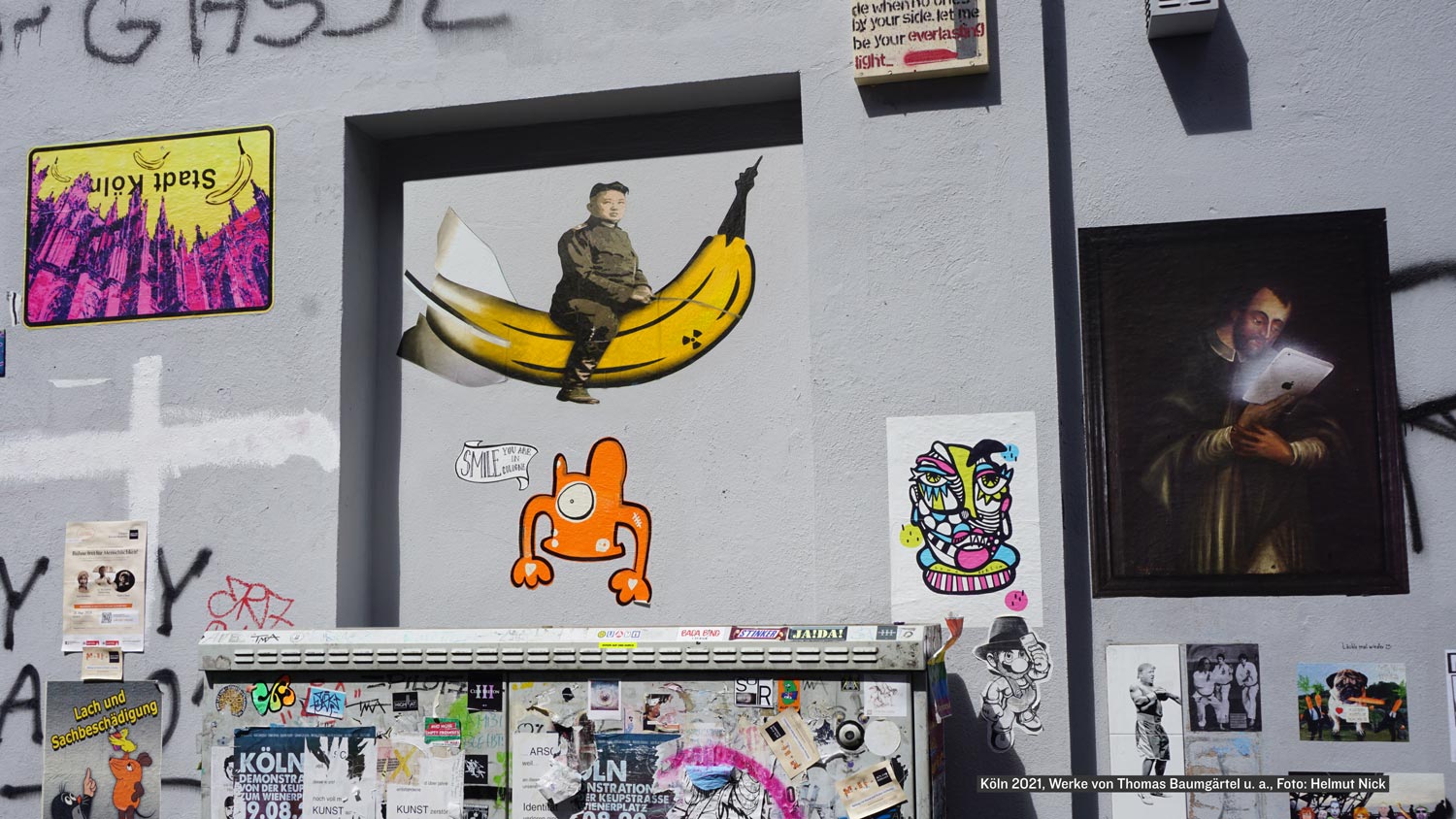
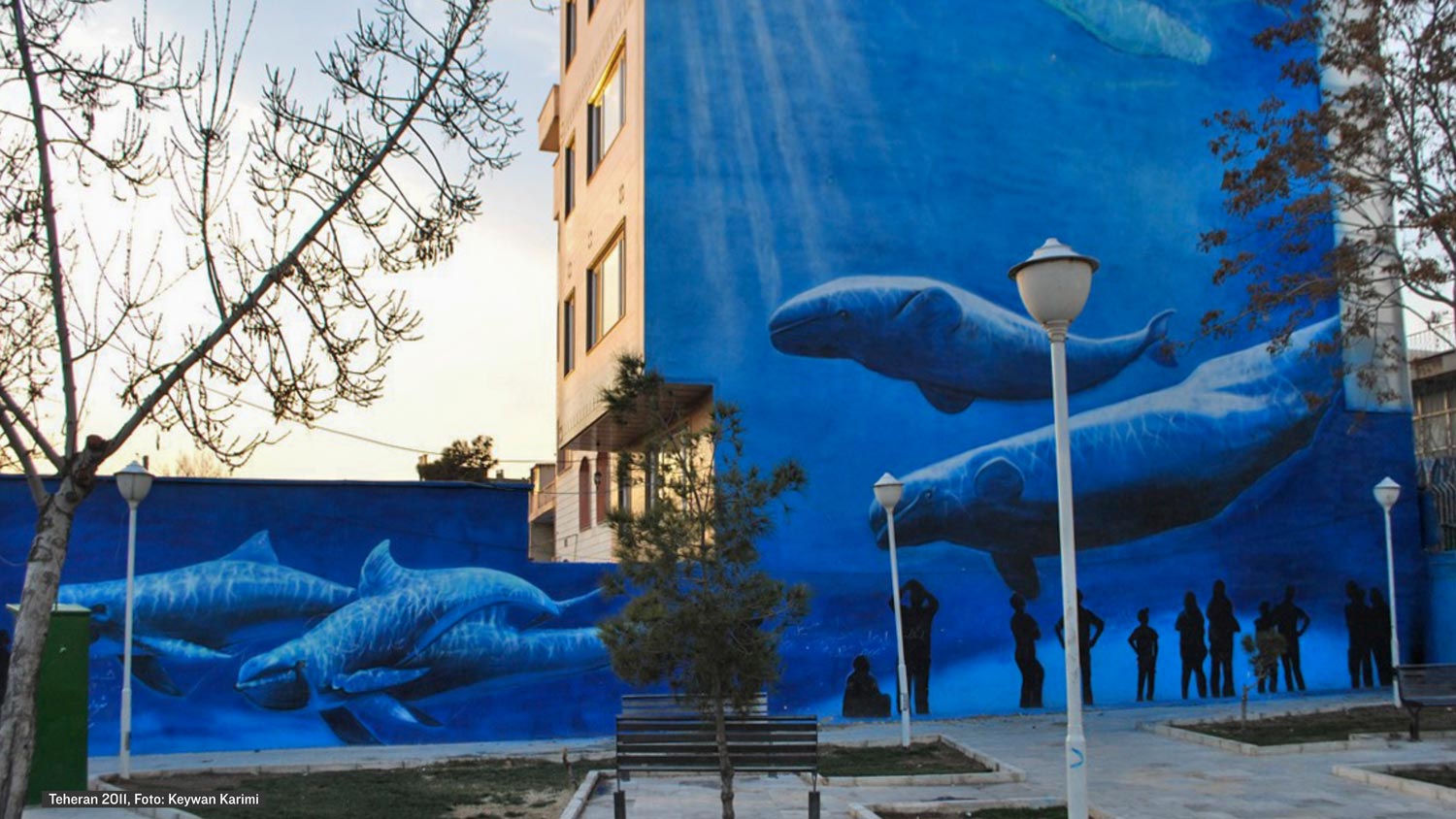
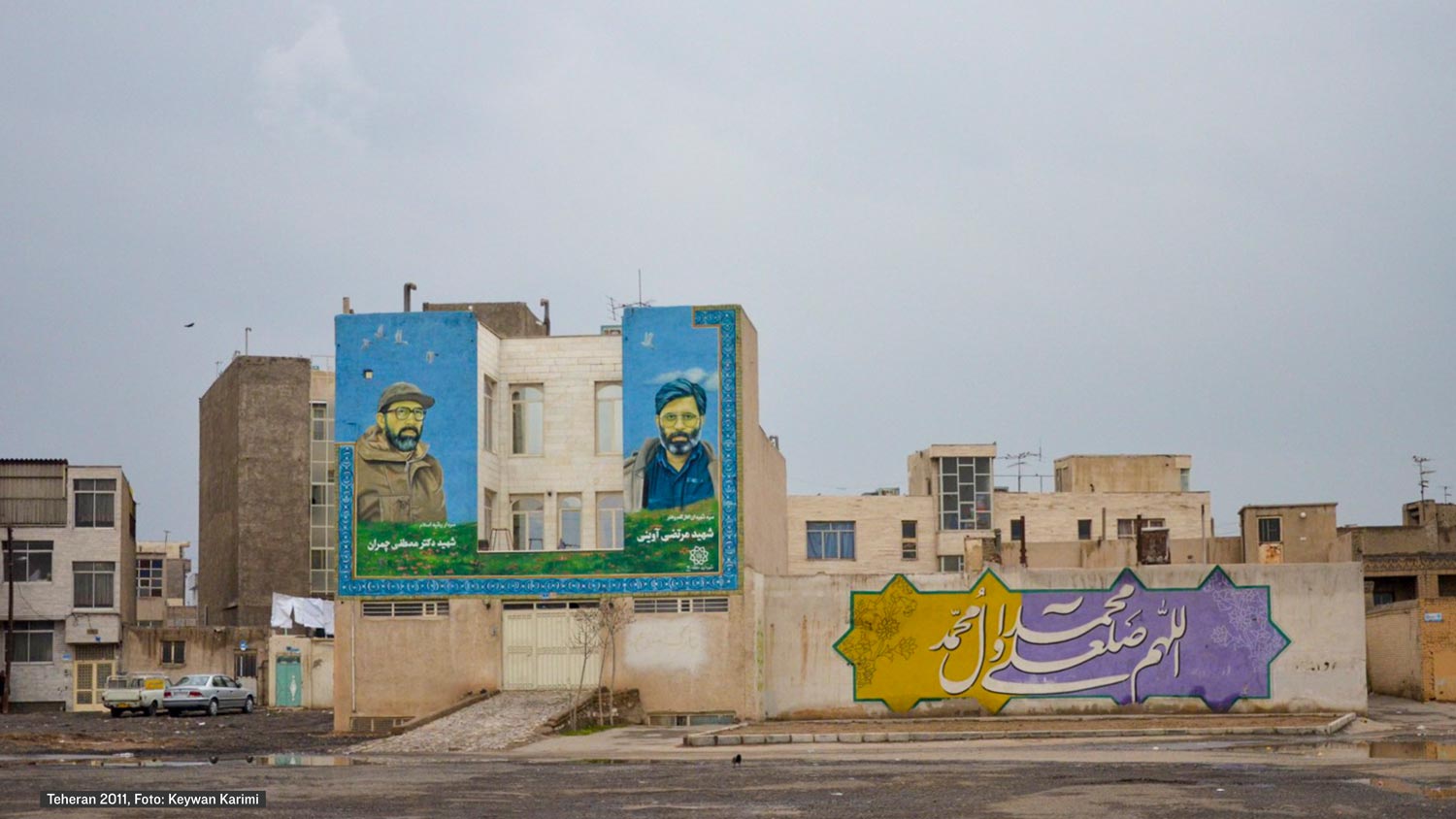
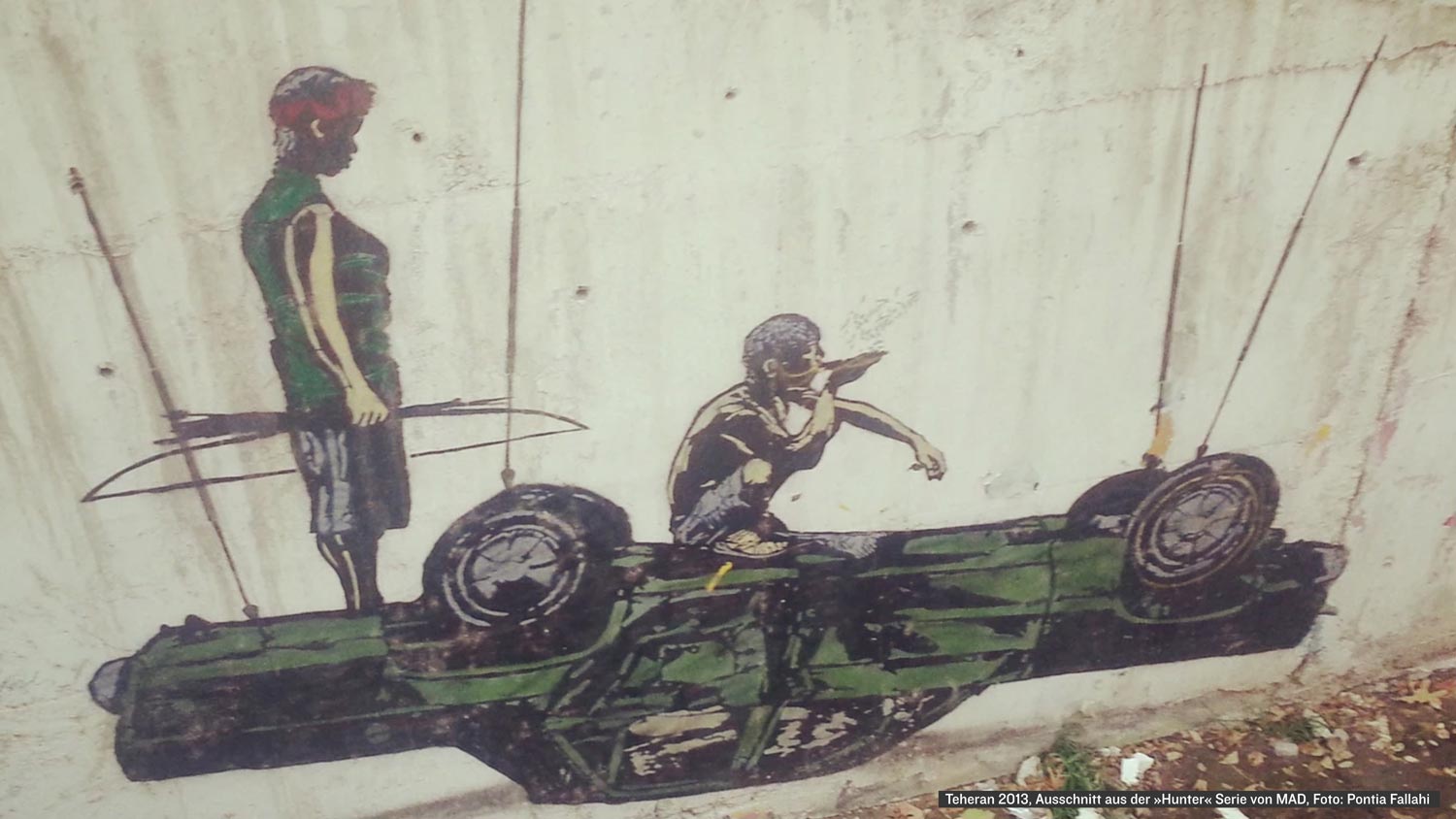
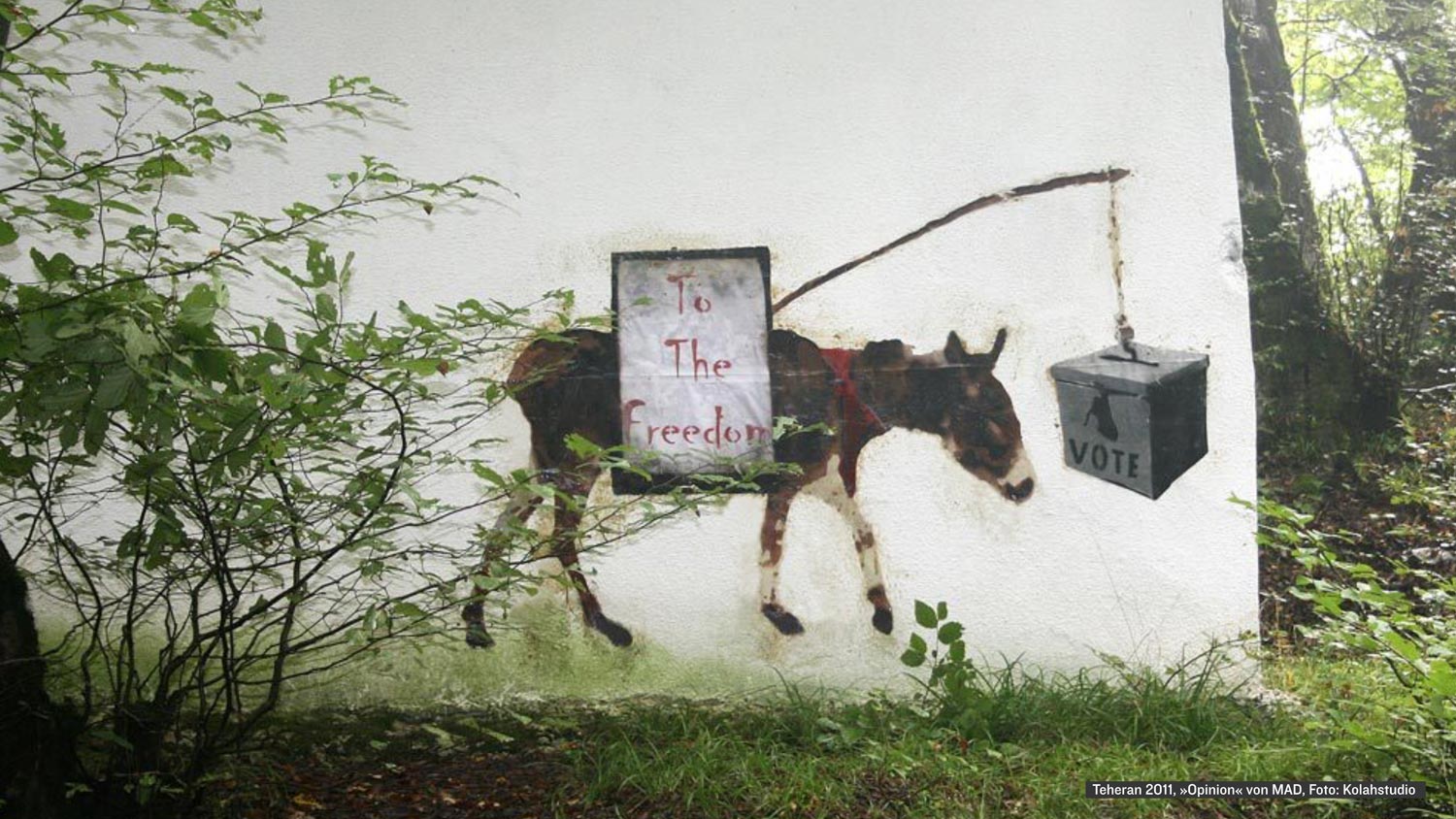

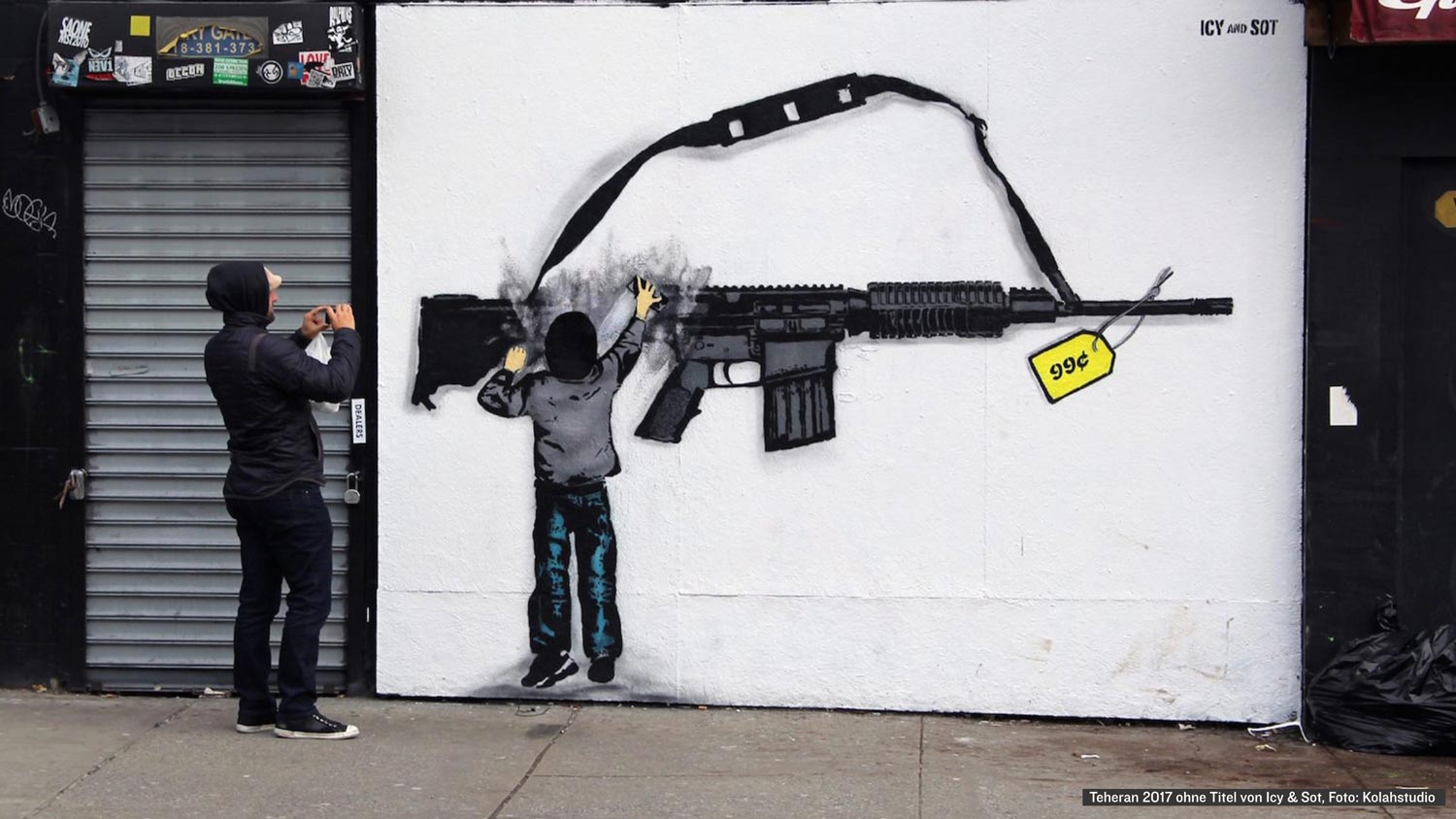
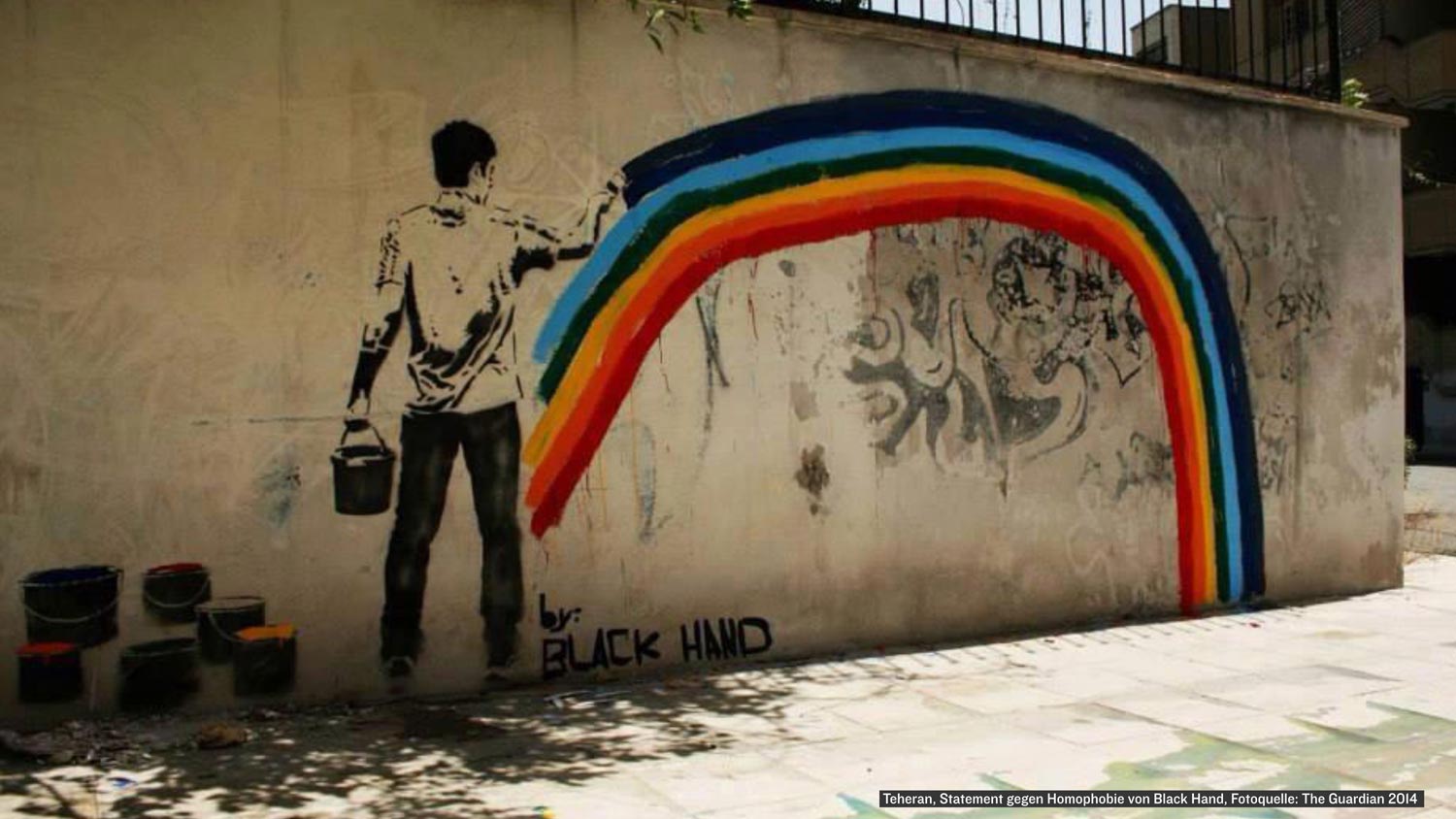
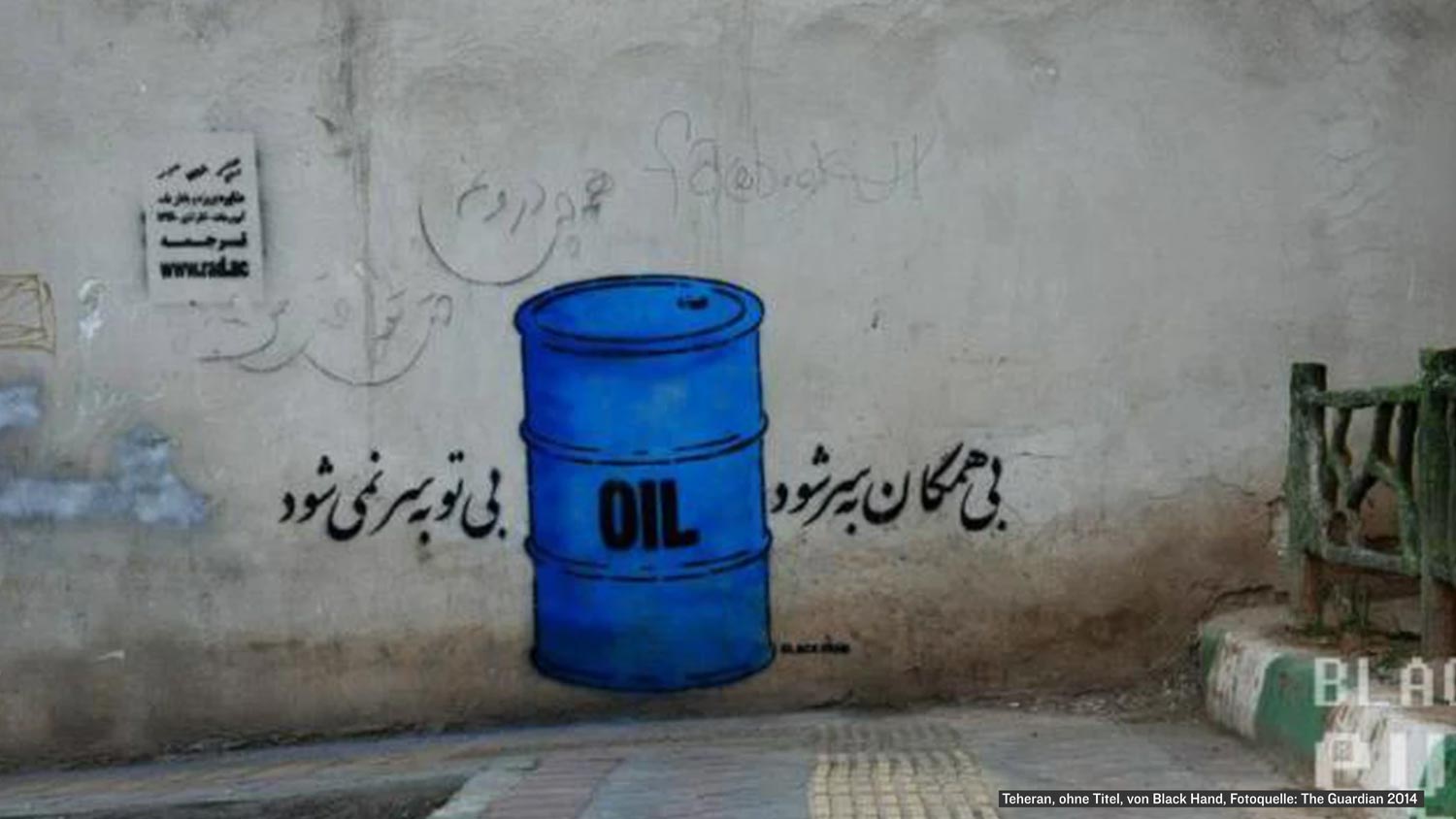





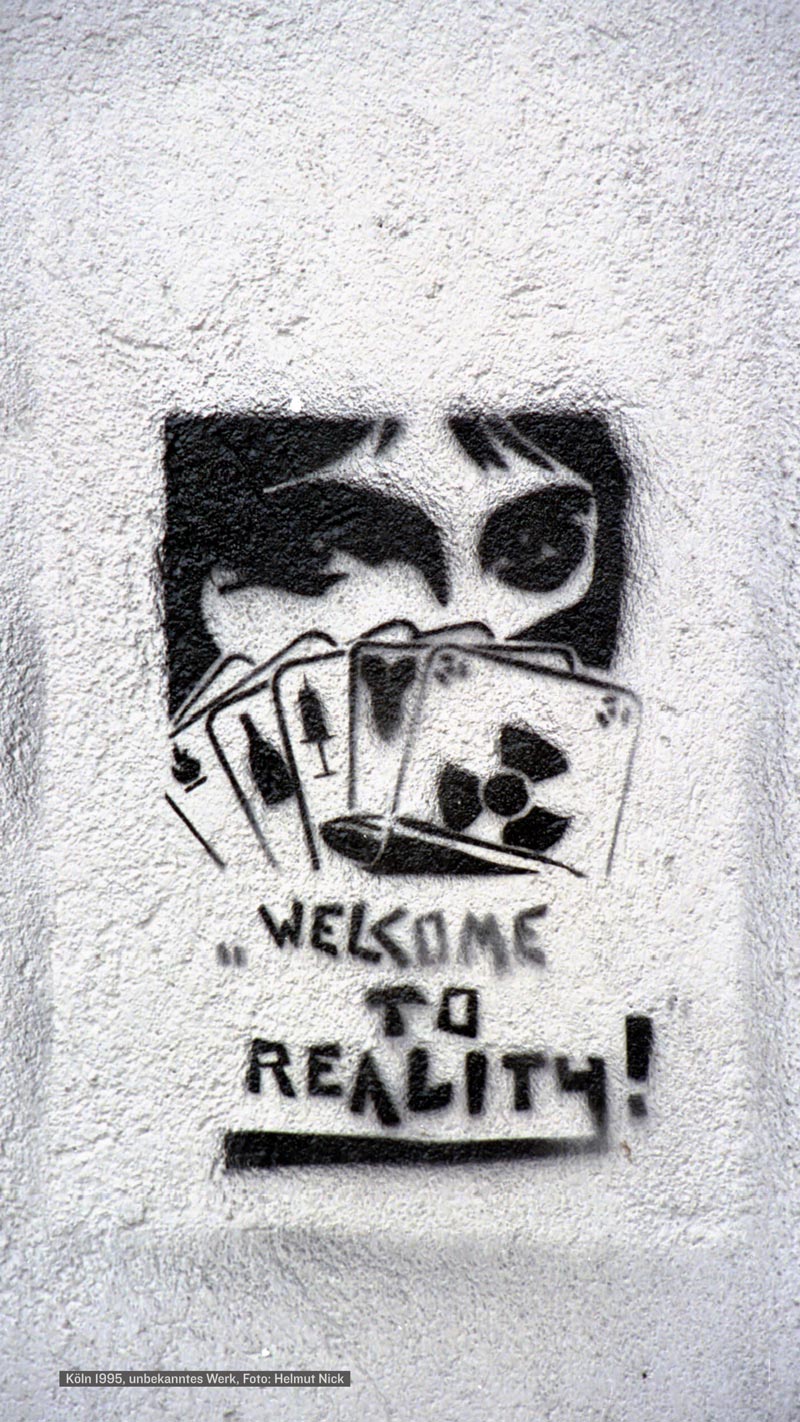
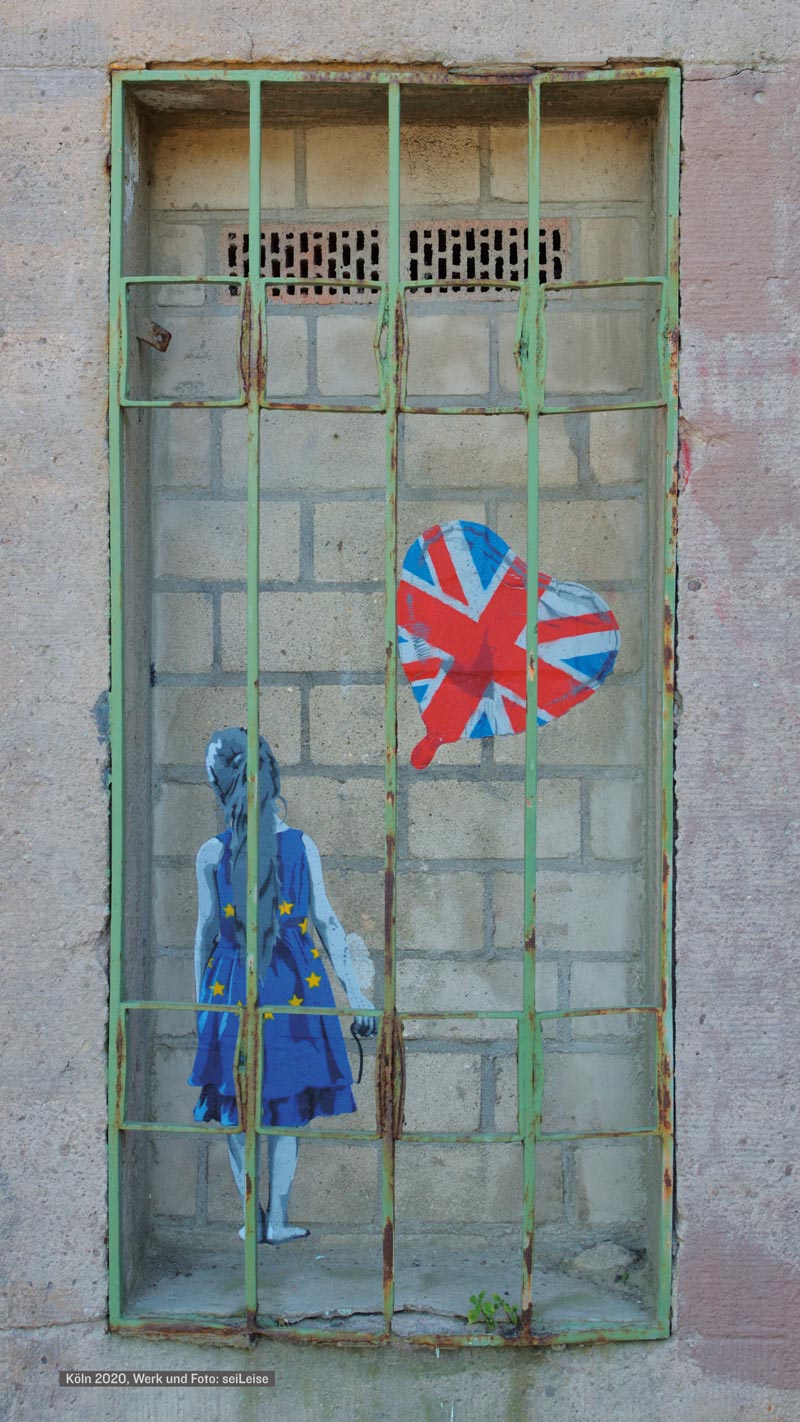

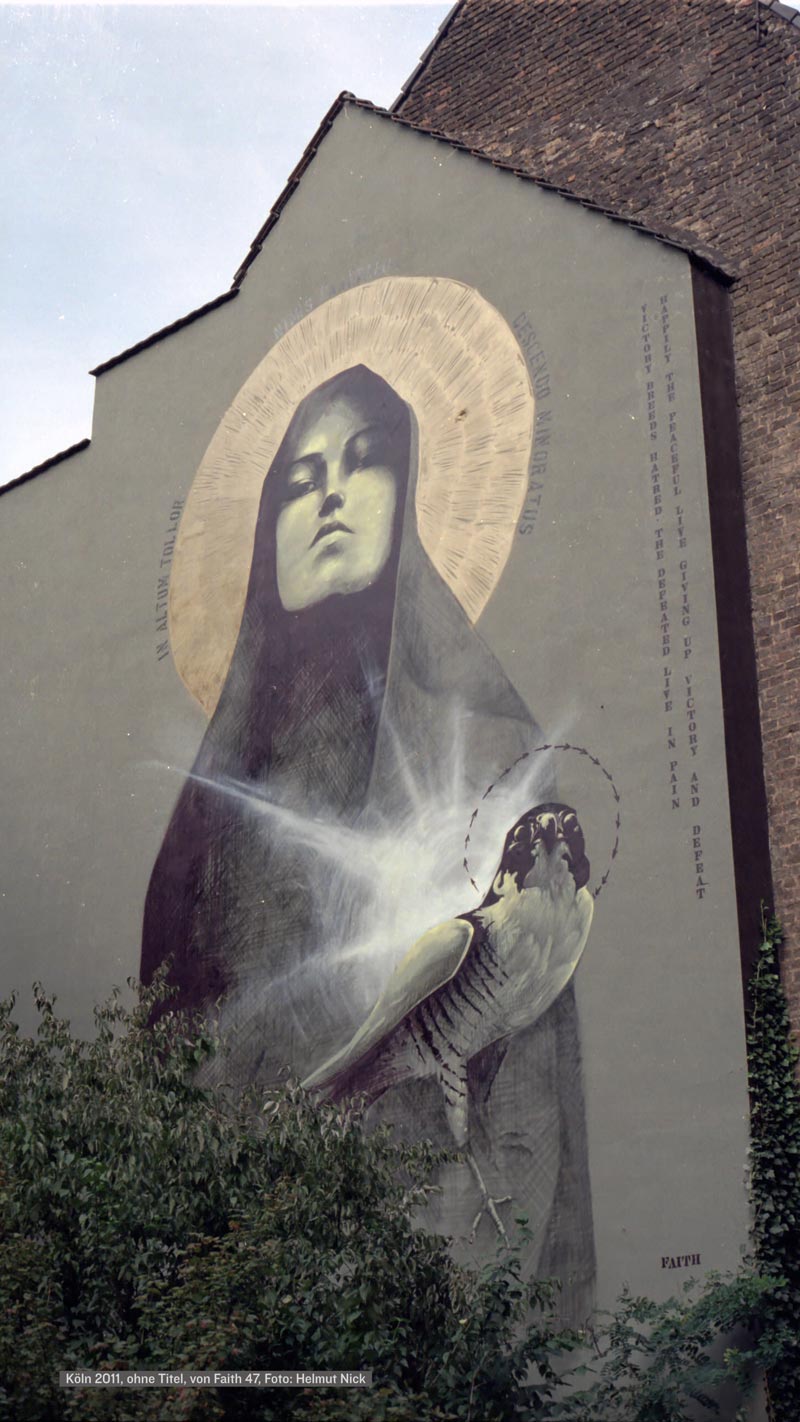
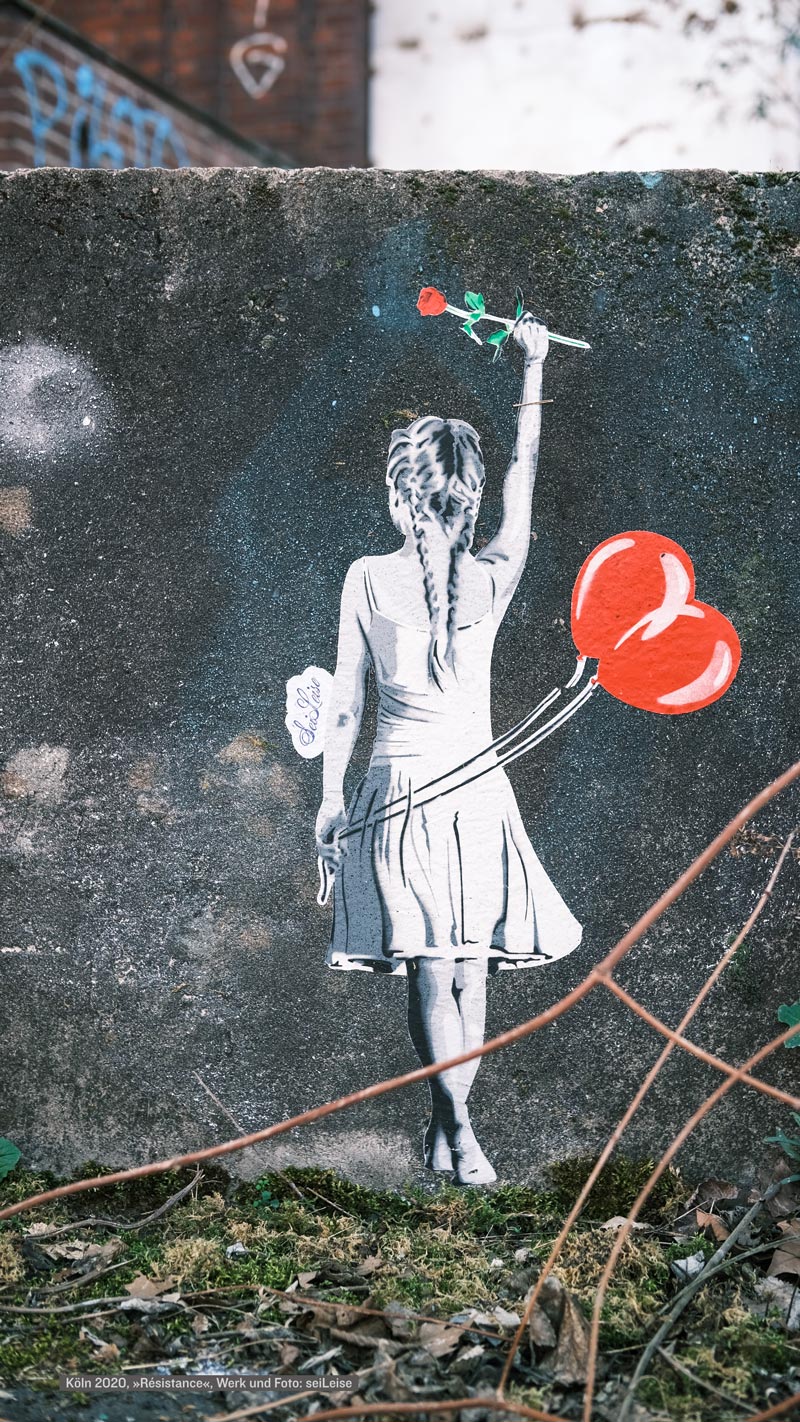
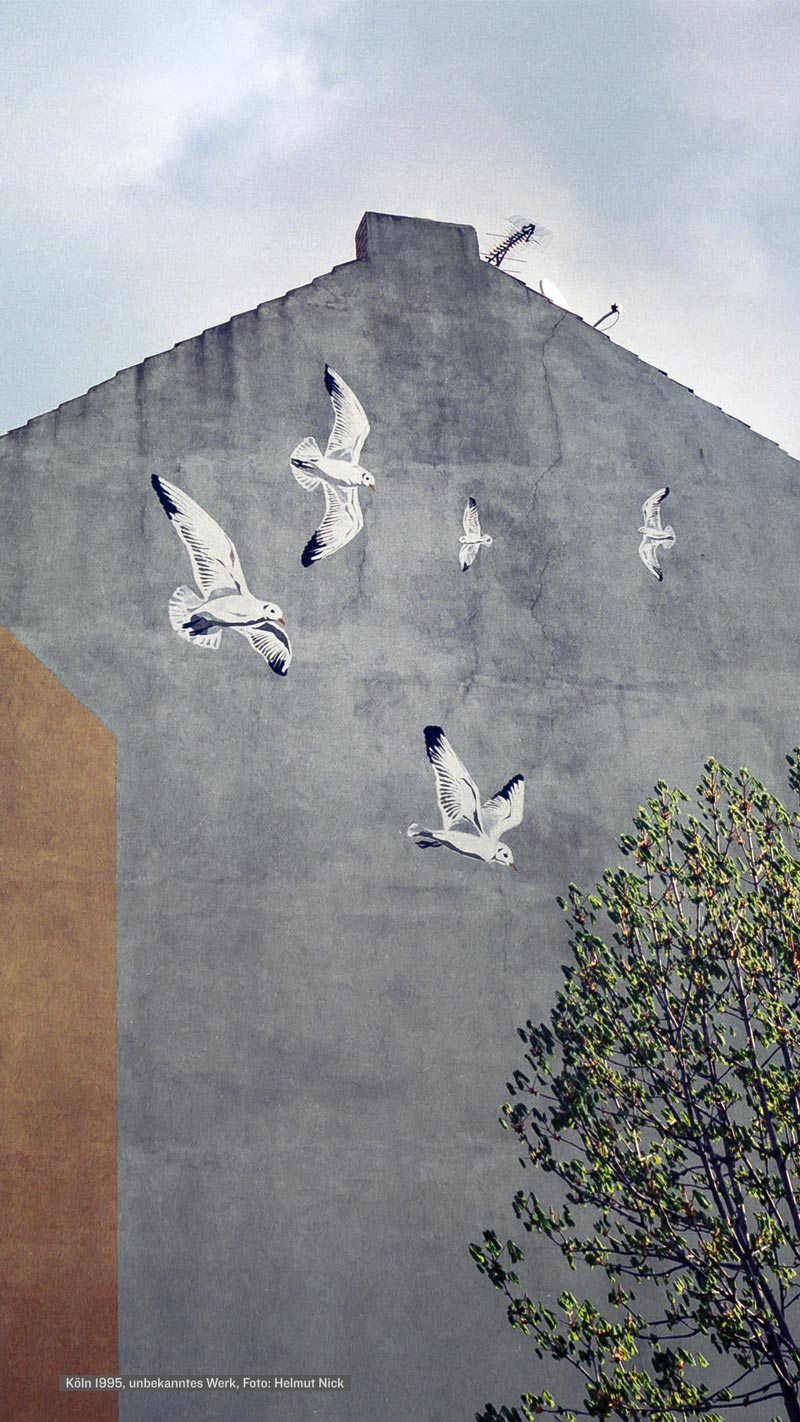
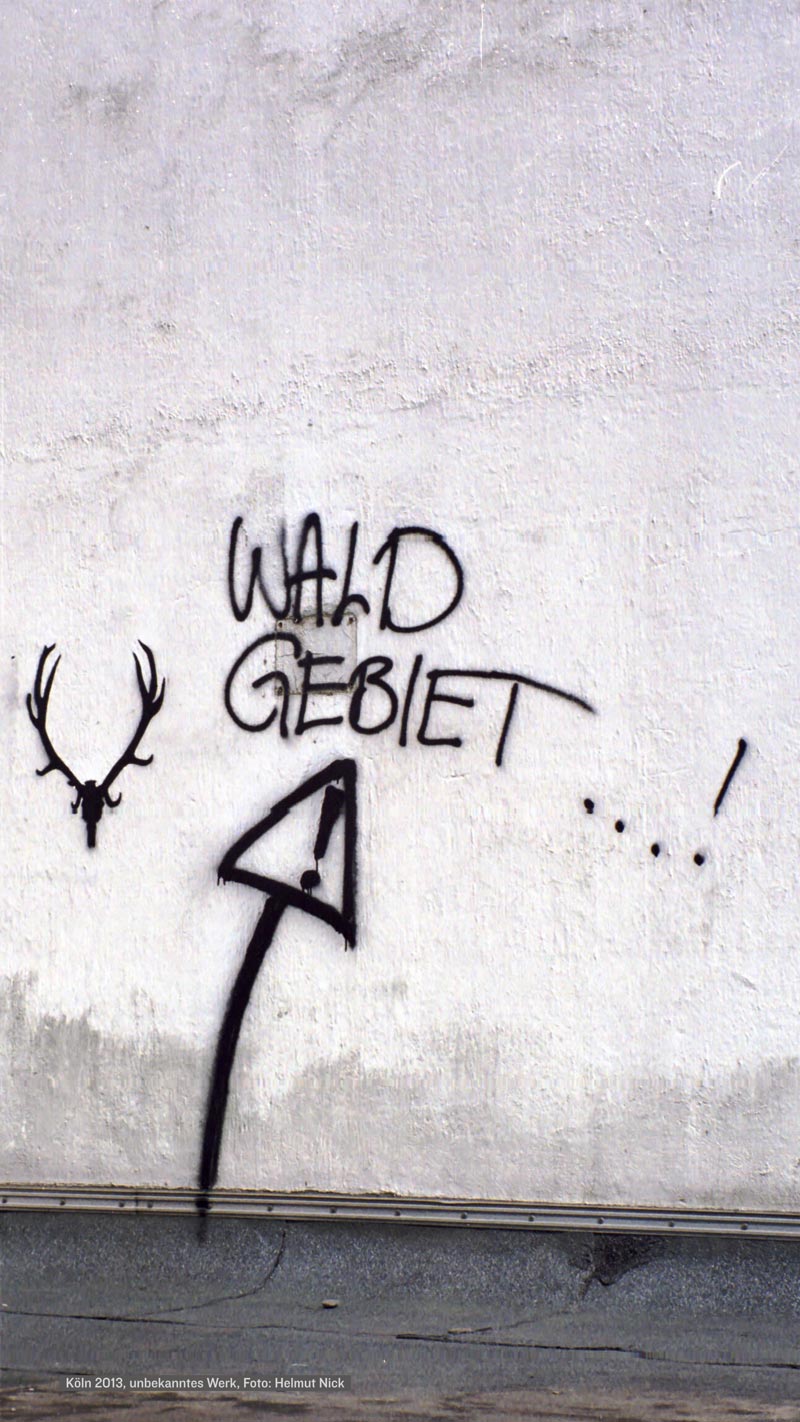
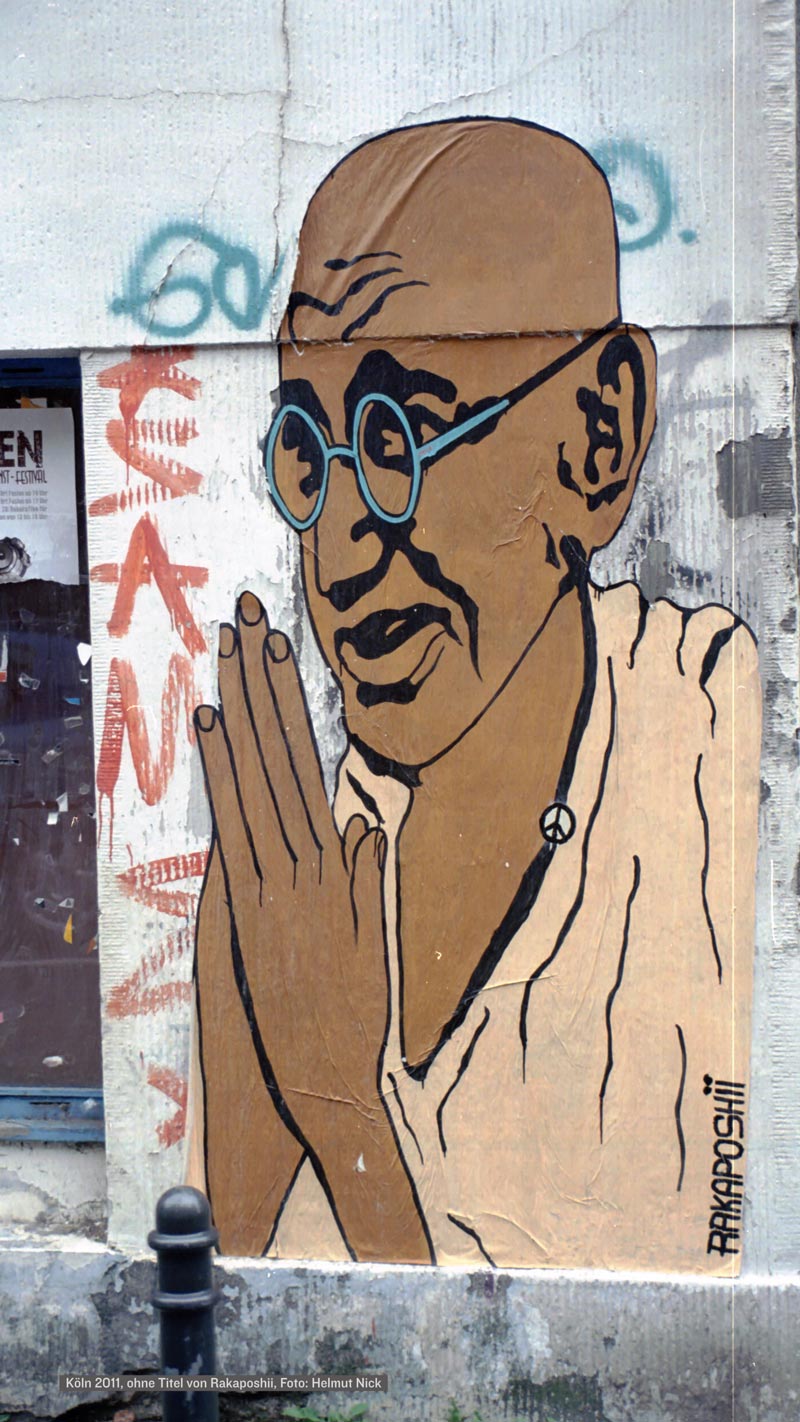
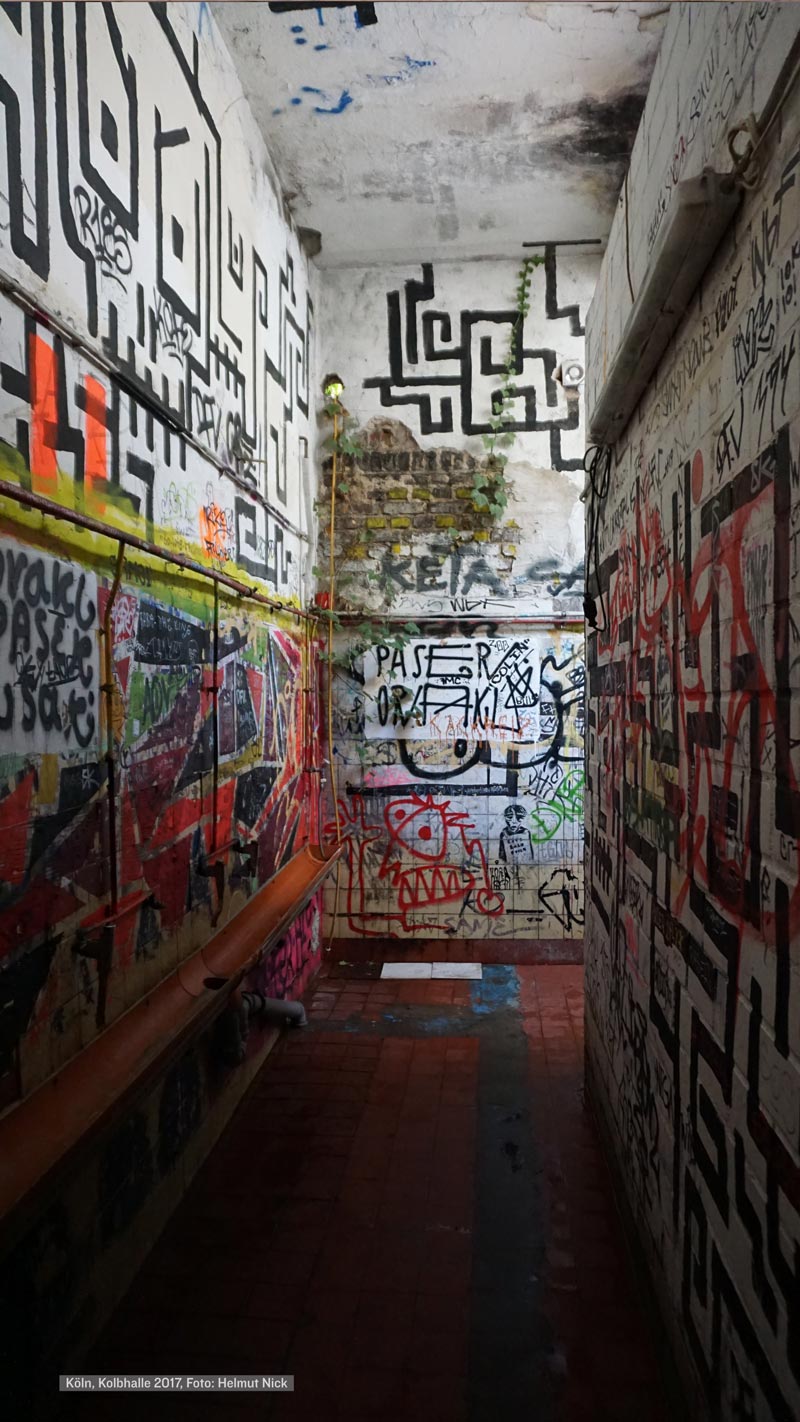

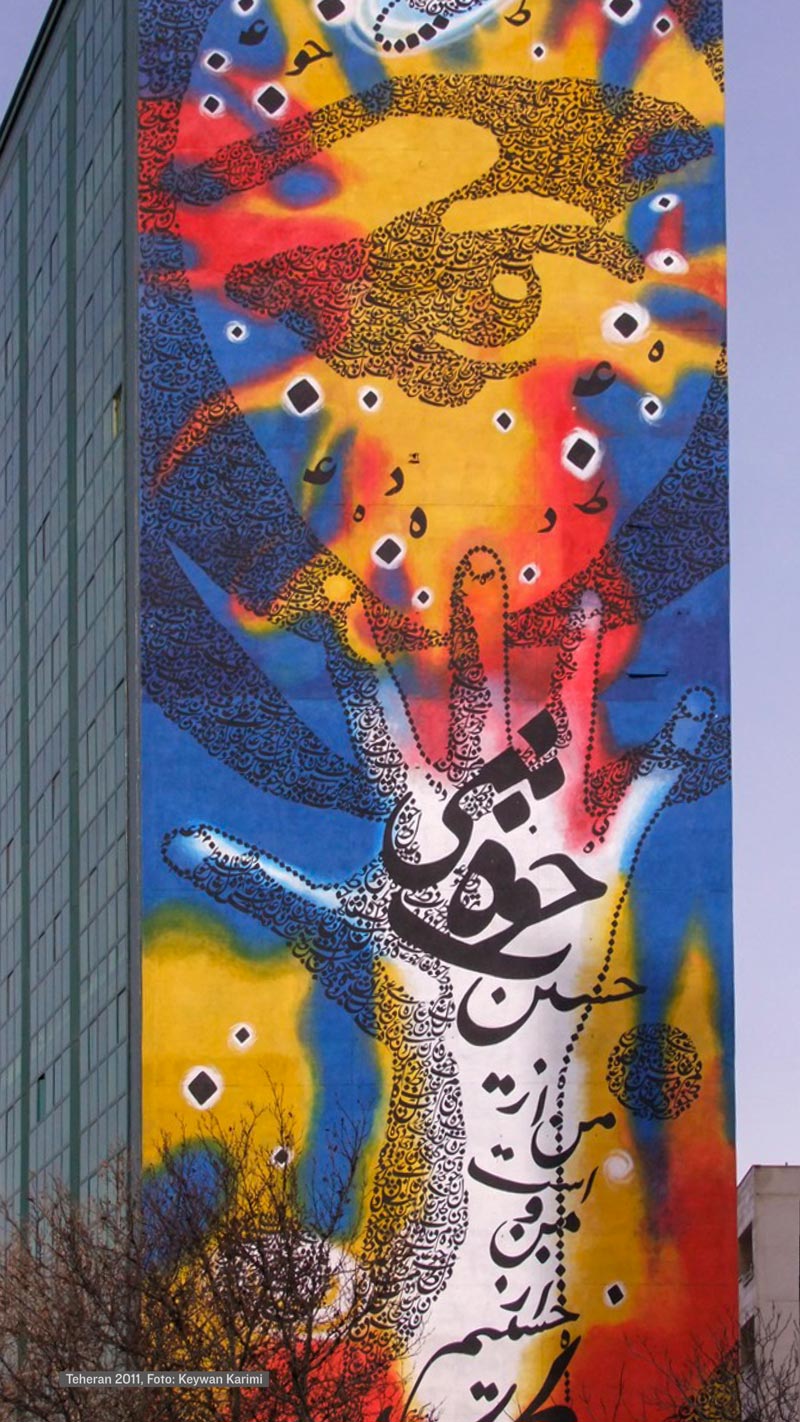
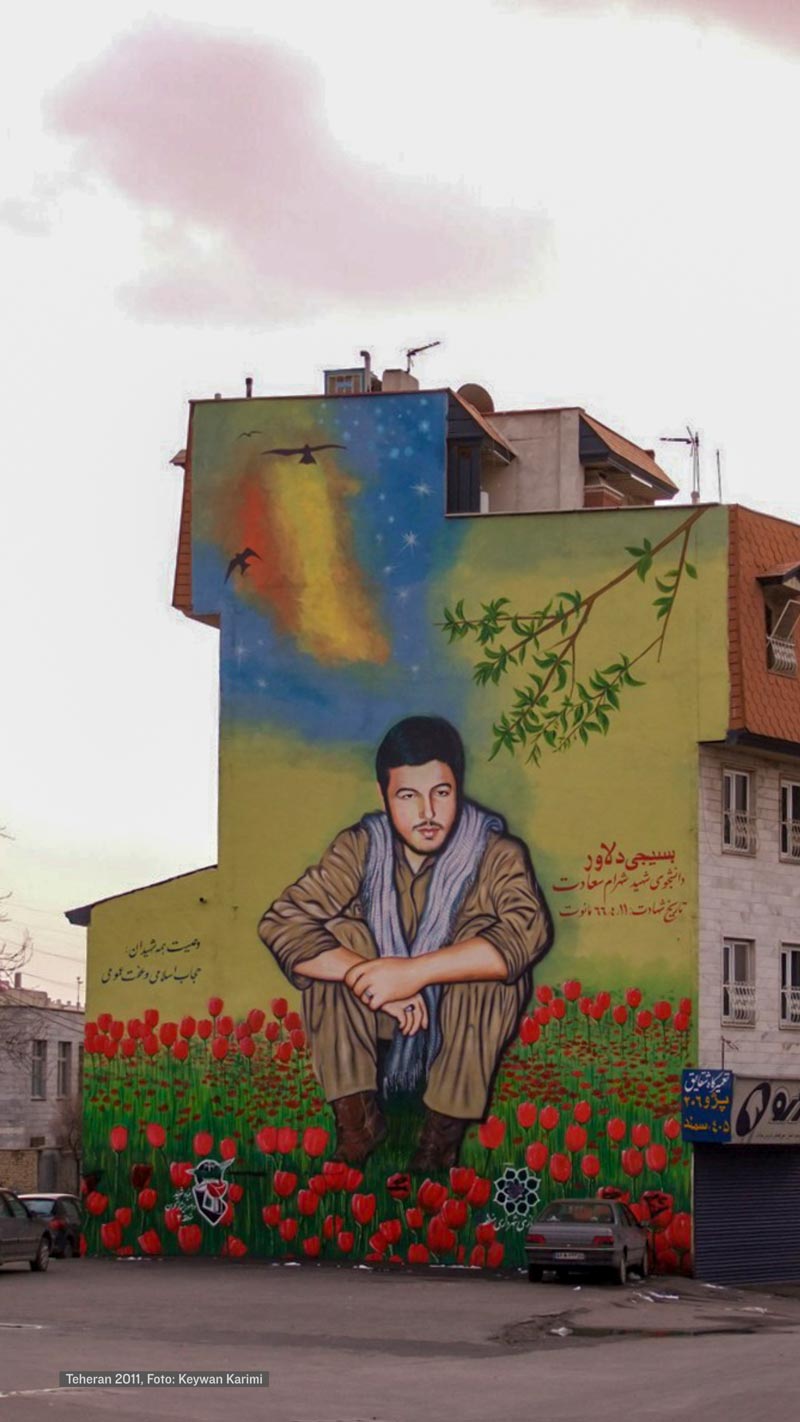
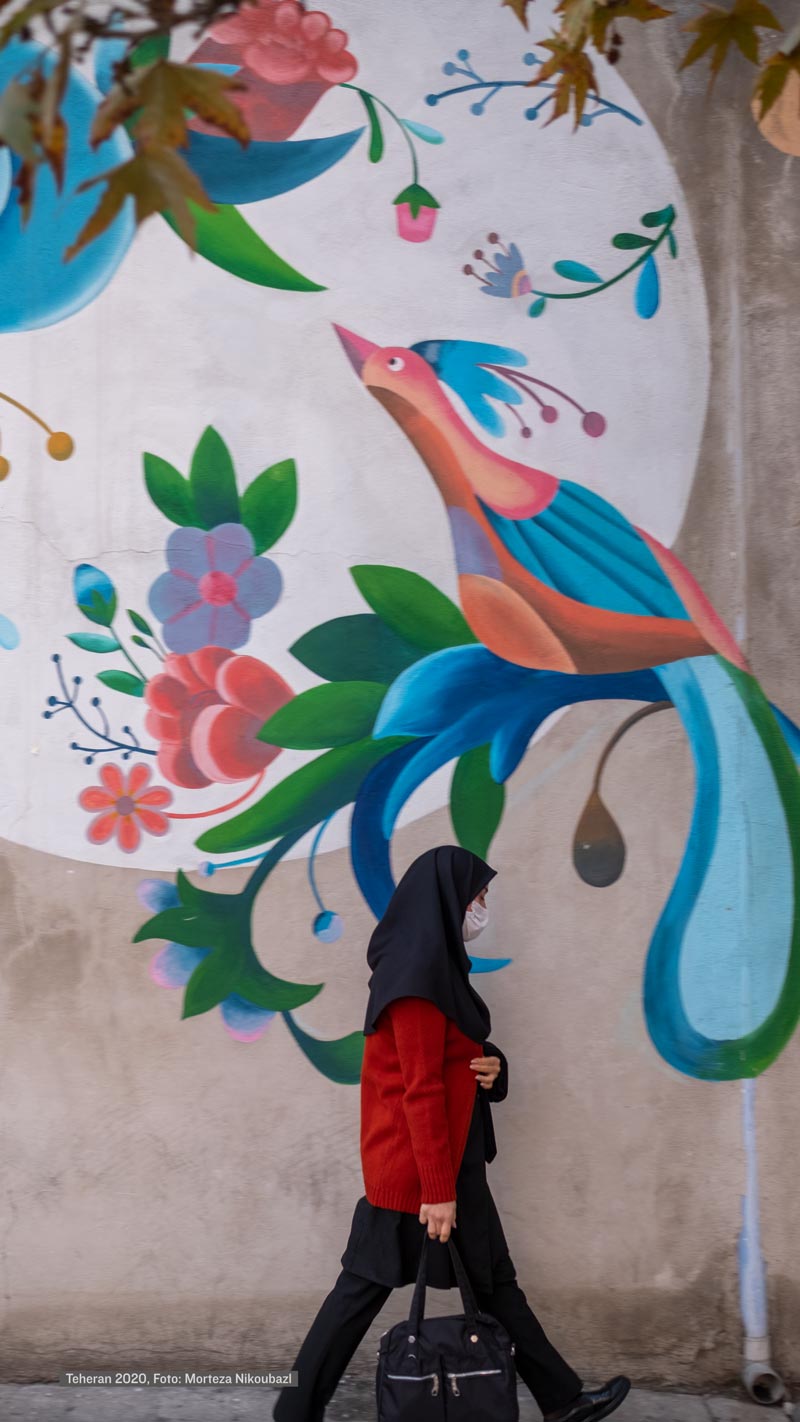

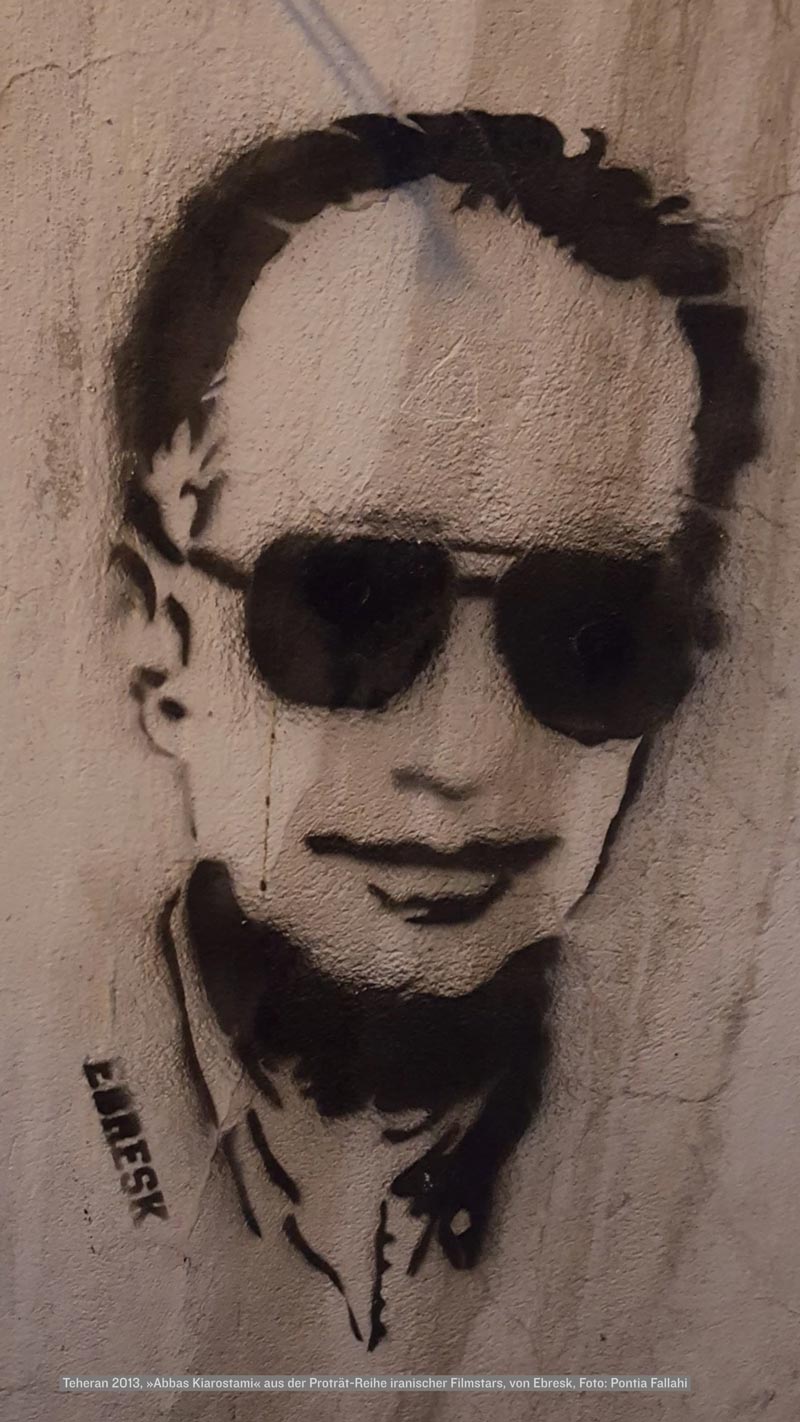


PRESS
Graffiti-Kunst in Köln und Teheran
Kölner Stadtanzeiger — 30 August 2022

Andere Seiten Zeigen
Stadtrevue — December 2022
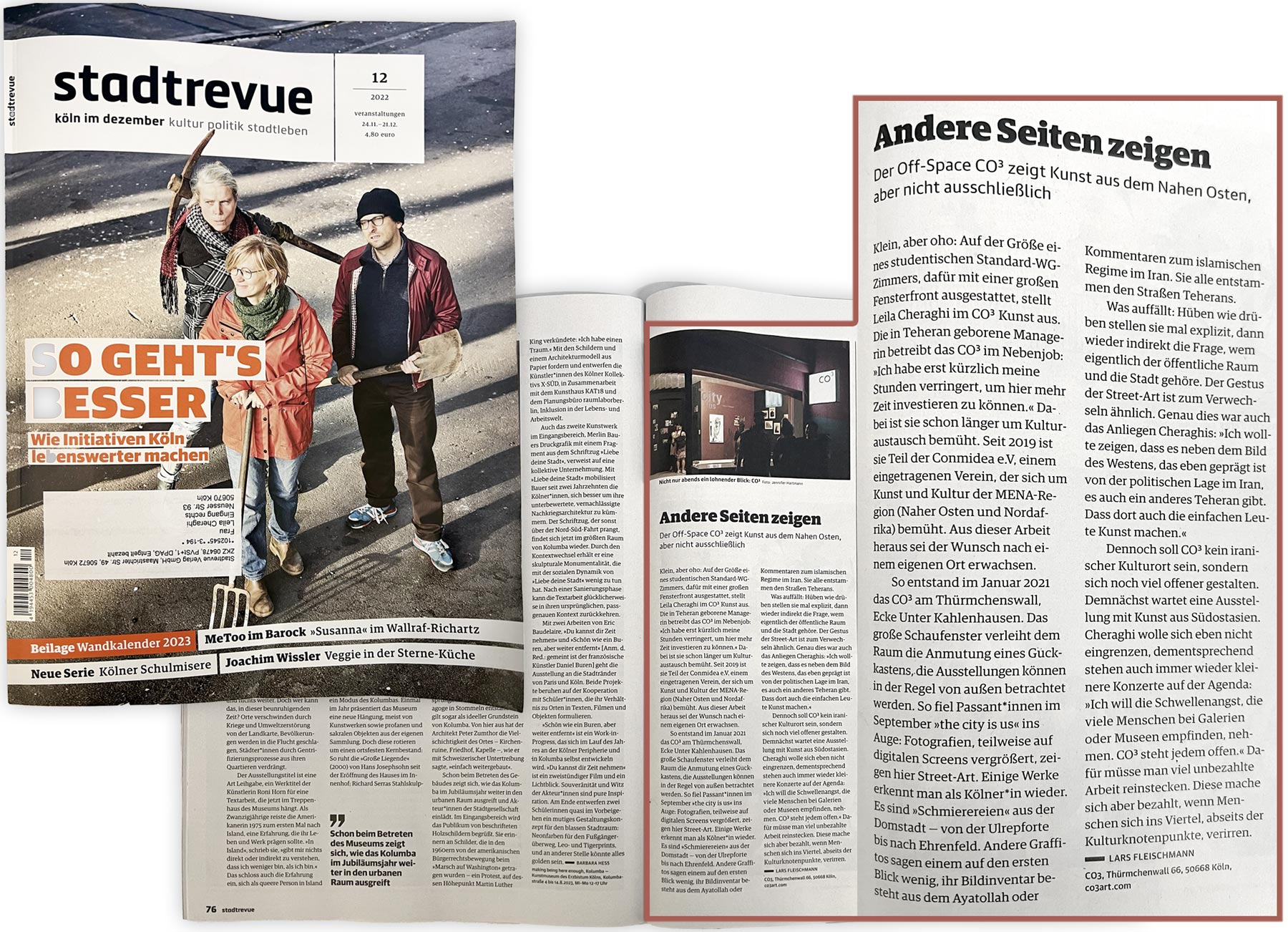
The City Is Us Official Posters

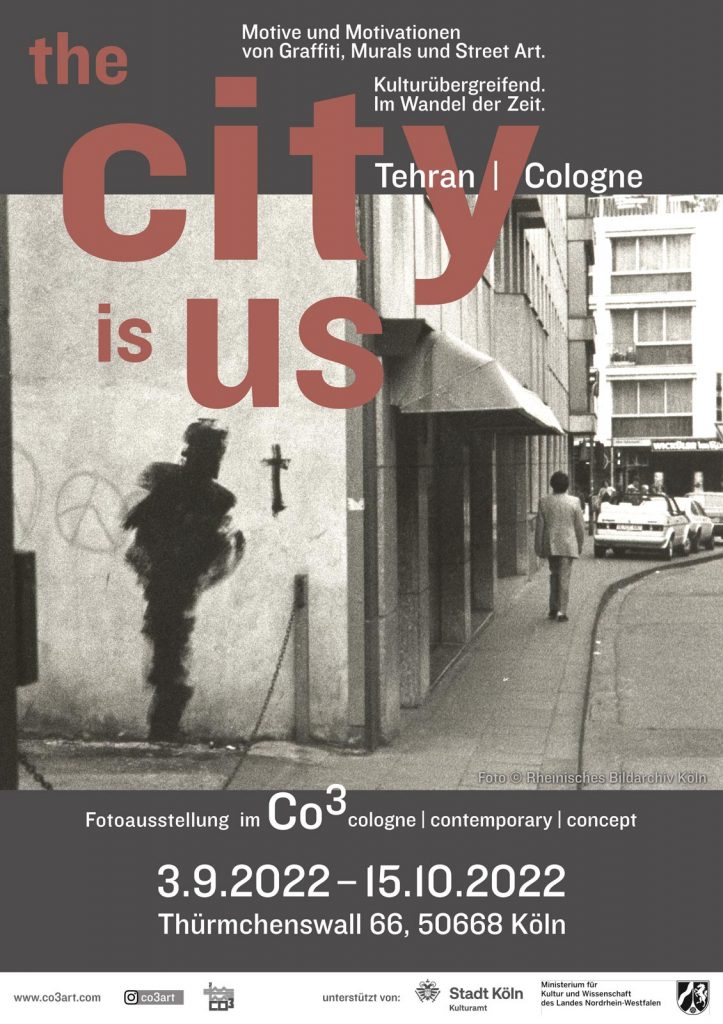
Poster Design:
Stefan Lindlahr
IMPRINT
Curator: Leila Cheraghi
Photos: Maryam Zandi, Rheinisches Bildarchiv Köln, Mehdi Ghadyanloo, Reza Nadji, Keywan Karimi, Helmut Nick, Morteza Nikoubazl, Tim Ossege (seiLeise), Philipp Pongratz.
Design and layout of the publication: Jan van der Most
Texts of the publication: Johannes Stahl, Amin Bozorgian, Maryam Vahdati, Stefan Lindlahr
Documentation of the exhibition: Jennifer Hartmann
© 2022 Artists, Photographers und Authors and also CO³ cologne | contemporary | concept

Thanks
Our thanks go to everyone mentioned above for their great contribution to the exhibition and this publication.
Many thanks also go to Nina Lindlahr, Dr. Pouya Majdpour and Reza Nadji for advisory support as well as to the Department of Culture of the City of Cologne and to the Ministry of Culture and Science of the State of North Rhine-Westphalia for their sponsorship.

